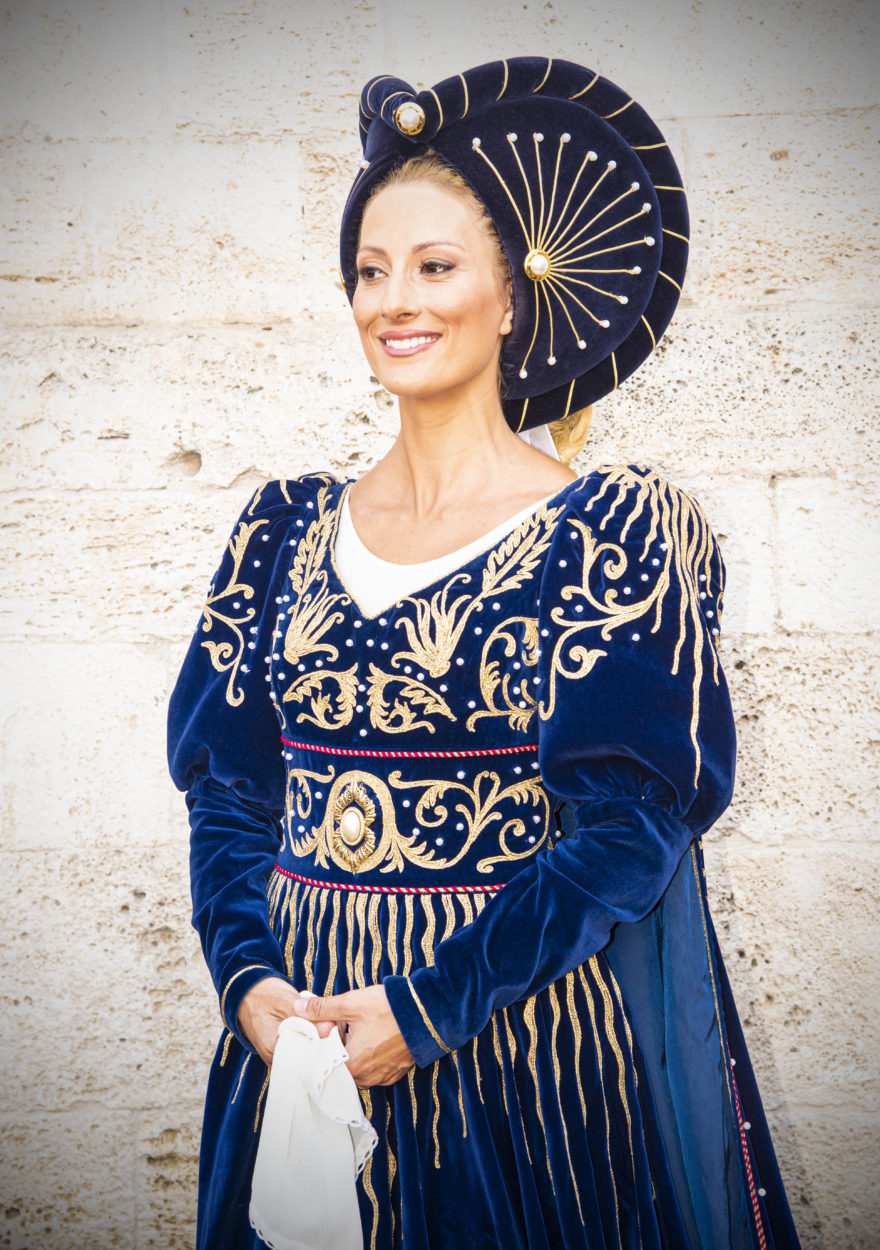
THE JOUST OF THE QUINTANA – 2019
Each year, for over sixty years, the Ascolani people have reenacted a pageant with roots going back to the tournaments staged by knights (Cavalieri) in the Middle Ages. These contests are themselves known by the term, Quintana, traceable back to the Roman Empire when encampments of the Imperial Military staged contests to promote physical prowess and morale. The Ascoli Quintana Pageant begins in mid-July and concludes after the first week in August.
The Ascolani participants in the principal events are costumed in authentic reproductions of the attire worn in this area during the Renaissance. The designs are based on the depictions painted by a renowned local, Renaissance artist, Carlo Crivelli. Like much of Central Italy east of the Apennine Mountains, Ascoli is sufficiently ‘off-the-beaten-track’ that the spectacular of the Ascoli Quintana is not as well known as the Palio in Sienna or the Regattas or Carnevale in Venice. But there is nothing in second place in what the Ascolani present. The participants spend much of the preceding year in preparation and rehearsals. The highest production values are in evidence in what the Ascolani present in the Quintana. The enthusiasm displayed by the Ascolani exudes their intense pride-of-place.
An interesting side note in the Quintana reenactment is to appreciate that many of the costumes that have been traditionally worn in the Quintana by members of the communities to the west of Ascoli, were damaged beyond repair in the series of earthquakes that struck the area some two years ago. In an outpouring of assistance, funds were donated from a variety of sources that made it possible to reconstitute this cultural heritage resource. In the photos below, many of these costumes from communities to the west are the newly replaced ones. One more demonstration of Italian pride of place and sense of communal connectedness.
Within the historic center of Ascoli, where we happen to live, the city is subdivided into six neighborhood areas called Sestieri. It is the competition between the Sestieri that forms the backdrop for many of the events of the Quintana. In addition, smaller towns surrounding Ascoli also participate in the pageantry and compete in some of the events. The depicted relationship of these smaller communities to Ascoli in the Quintana itself goes back into the Middle Ages when the feudal lord in Ascoli was given fealty, or loyalty, by the subordinate lords in the surrounding area. Place names of nearby towns still include the term ‘Castel of’ in their name as in the nearby Castel di Lama, or ‘Castle of the Blade‘.
In the procession, each Sestieri and the surrounding communities, are made up of appropriately costumed representatives. The Sestieri from the core of Ascoli Piceno are represented in the front of their cortege by their Capo di Sestieri or Leader of the community, the Dama or principal lady and her attendants, their ruling consul and the contestants in the various events. The Castles from around Ascoli are represented by their Castellano, or leader and the Castellana, their principal lady and their principal citizens.
The order of the procession begins with the entourage of Il Magnifico Messere, or First Citizen, a role reenacted by the current Mayor of Ascoli Piceno. The entourage also includes appropriately costumed members of the Ascoli City Council, knights and standard bearers, noble women of the community and the large Renaissance musical ensemble consisting of brass instruments and drums. The brass instruments are true to the Renaissance in being so-called, ‘natural trumpets’ essentially a straight, rather than a folded curved instrument. They are referred to as ‘clarions’. Some have a single piston valve to redirect the sound through another channel to add a half-tone, or sharp or flat note to what is being played. The musical groups are, themselves, also evaluated and each year new levels of musical prowess are on display. If you happen to be on an Ascoli street when one of these musical groups comes by, the intensity of the sounds reverberating off these ancient stone surfaces, transports us back to a sense of the Renaissance and provides a visceral feeling that something, or more likely, someone important is coming your direction.
The Commune, made up of the central city of Ascoli Piceno, is next followed in the procession by contingents representing the Feudal Period Castles surrounding Ascoli. Following them are the contingents of the six Sestieri of Ascoli Piceno who each have a knight competing in the Joust event. Each Sestieri presents their elaborately costumed Dama near the head of their contingent. Each presents their knights and nobel citizens and their own Renaissance brass and drum music contingent. Costumed contestants in the various Quintana events parade with their respective communities including their mounted knight who will compete for the prize in the Joust event.
The contests of the Quintana include choreographed flag tossing, Spandieteri, on an individual, small group and large group basis. There are also archery contests. But the most spectacular event is the mounted Joust which involves engaging a stationary target, with a lance, while at full gallop. The first annual Joust contest occurs during the afternoon on a Sunday in Mid-July. The second Joust occurs in the evening on the Sunday concluding the first week in August. Proceeding each of these Jousts, some 1,500 Renaissance costumed Ascolani participate in the long procession through the historic center of Ascoli described above.
This year, our vantage point to observe and photograph the first procession in July was from the upper balcony of the historic Cafe’ Meletti on Piazza del Popolo. We belong to an Italian group that organizes dinners and visits to farms and wineries throughout the year. For the first Quintana procession of this year, the group booked the balcony at Meletti’s, high above the Piazza below. The first series of the photos below were taken from that vantage point.
For the second Quintana procession in early August this year, we repeated what we had previously done and went to the staging area where the various groups gather in preparation just prior for the procession to begin. The groups participating in the procession, converge on Ascoli’s Piazza Ventido Basso, named for a Roman General in the Army of Mark Anthony. At the appointed time, what had only moments before seemed a randomly moving chaos of costumed people, in short order, becomes well organized marching contingents. Then the rhythmic marshal drumbeat begins and the parade starts. It is a joy to informally mingle, with camera in hand, among these costumed Ascoli and sense their enthusiasm and camaraderie.
With essentially two main event Jousts during the annual Quintana Pageant, both the Sestieri and the participating surrounding communities distribute the honor of being presented as the Dama, and some other principal personages, between different honorees. A discerning eye will note that different people seem to be in some of these major roles between the first series of photos taken in July and the second taken in August.
Some of the August photos depict the groups as they prepare to set out. Other photos are close-up portraits of the Dame who were selected by their individual Sestieri, or the Castellana to represent the Castles in surrounding communities. Enjoy!
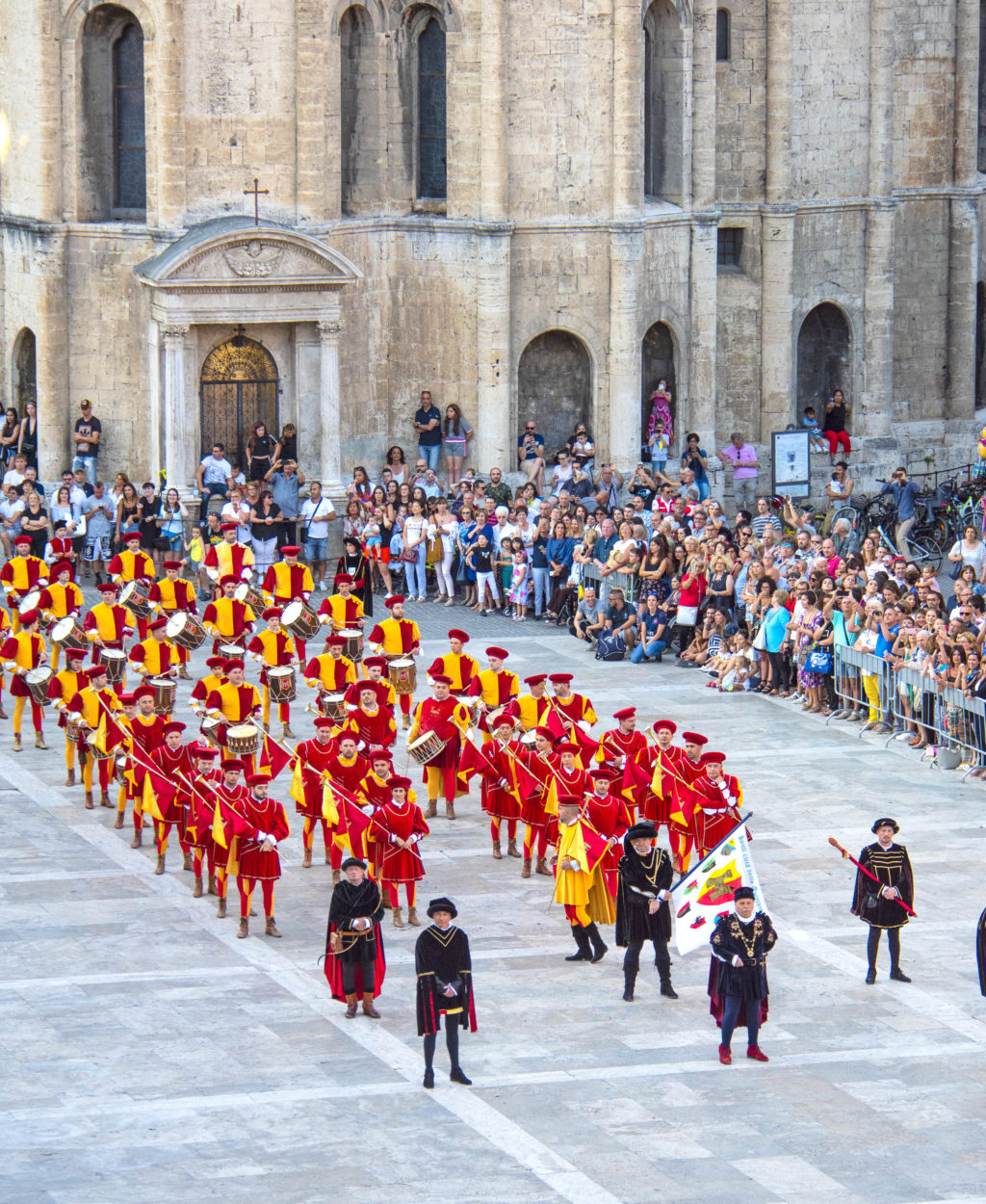
The Quintana procession enters Piazza del Popolo. The photo is of the musical ensemble of the Commune of Ascoli Piceno
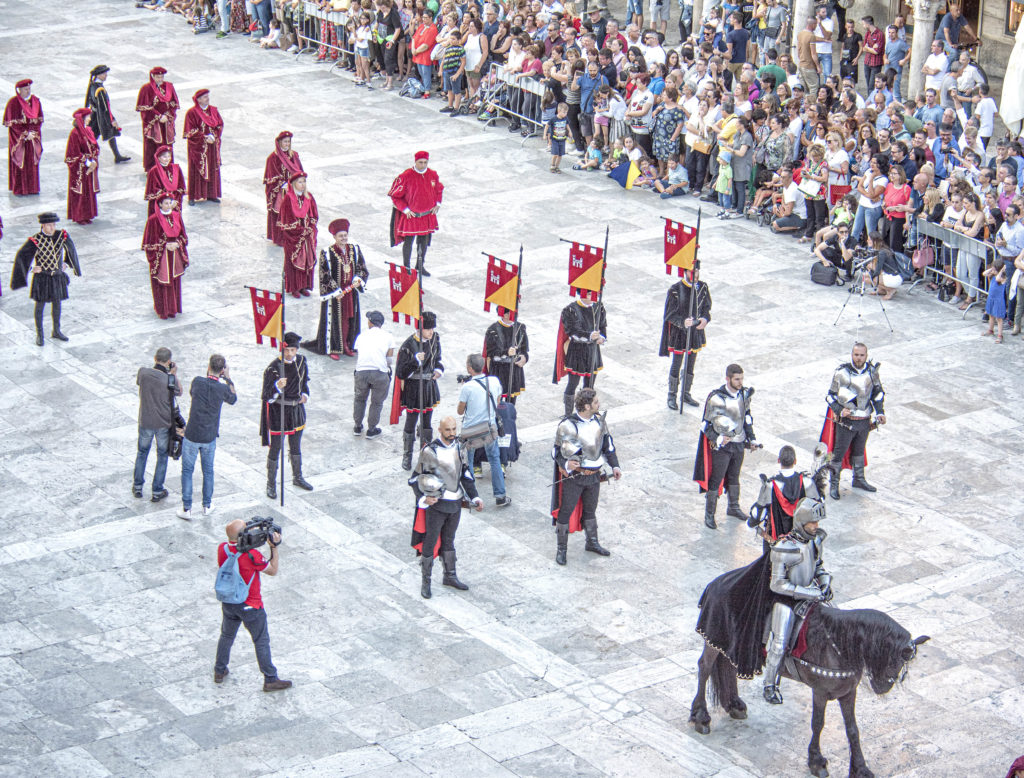
Near the head of the procession is a mounted knight followed by knights of the Commune and behind the standard bearers is the ‘Magnifico Messere’, the first citizen, actually portrayed by the current Mayor of Ascoli Piceno. Behind the Mayor are the members of the Council of Ascoli Piceno.
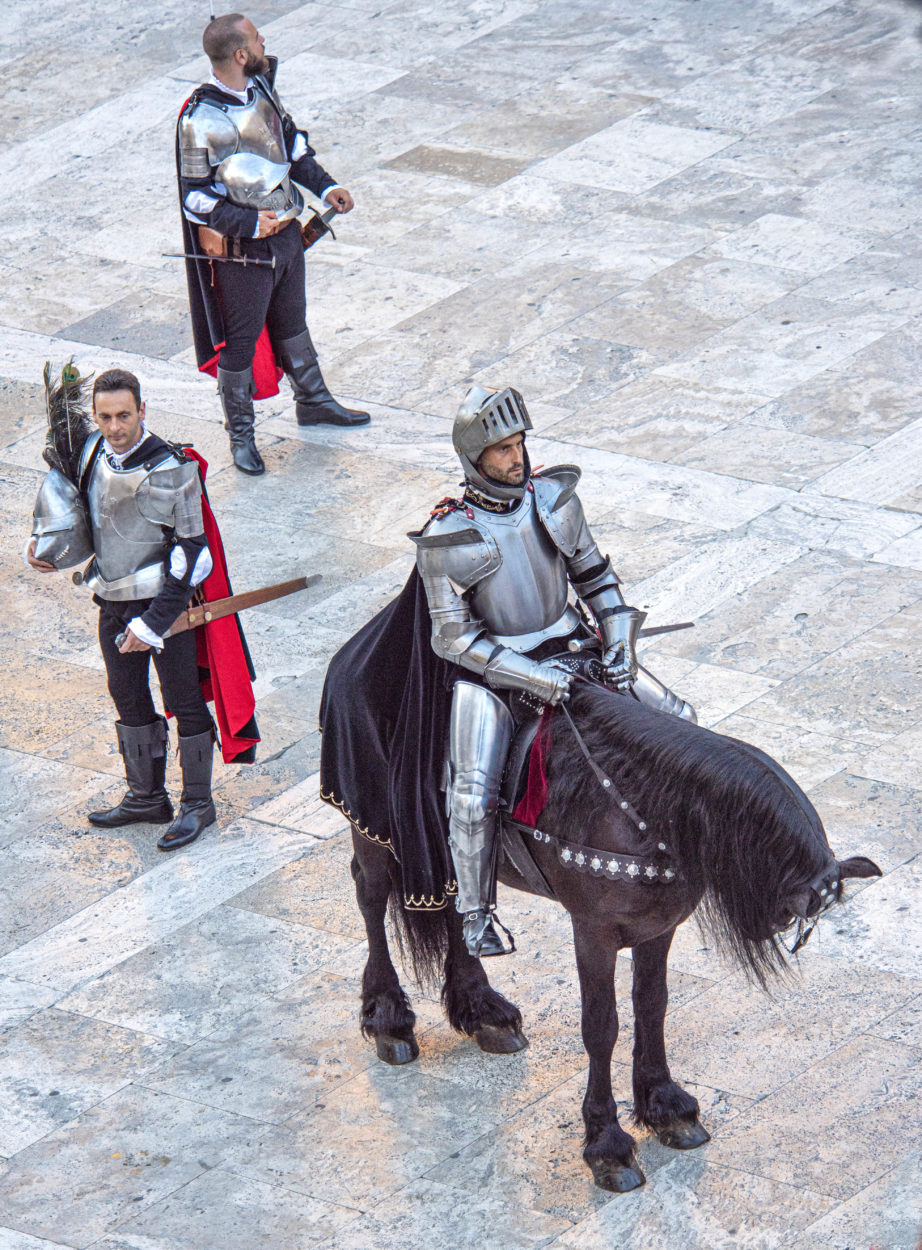
The Quintana Procession leading mounted knight.
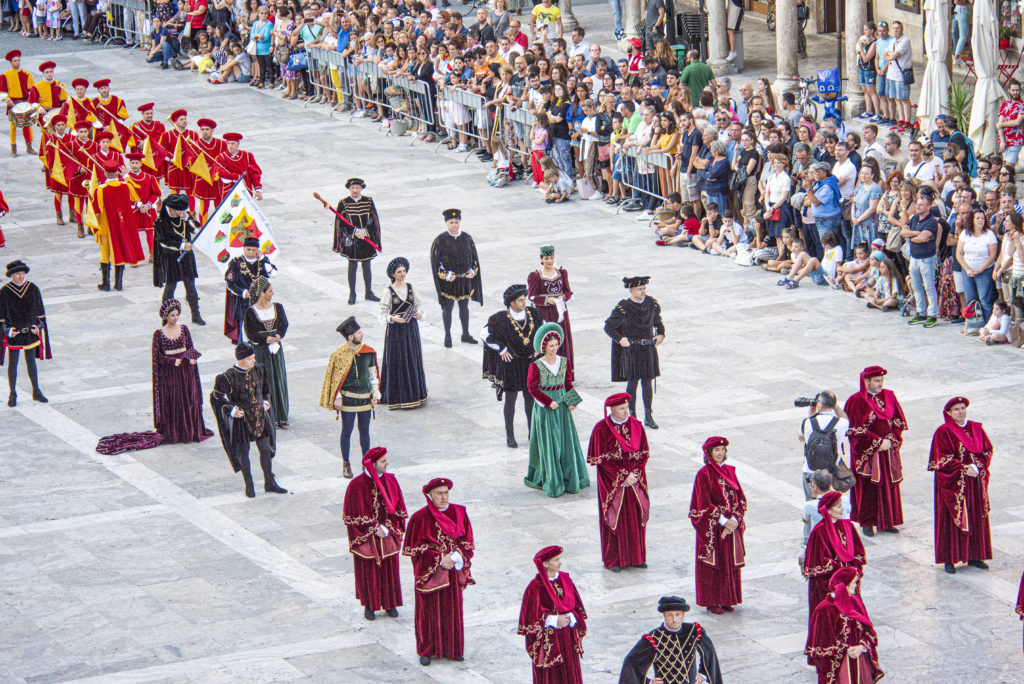
The Ascoli City Coucil followed by prominent citizens and behind them, the Music Corps of Ascoli.
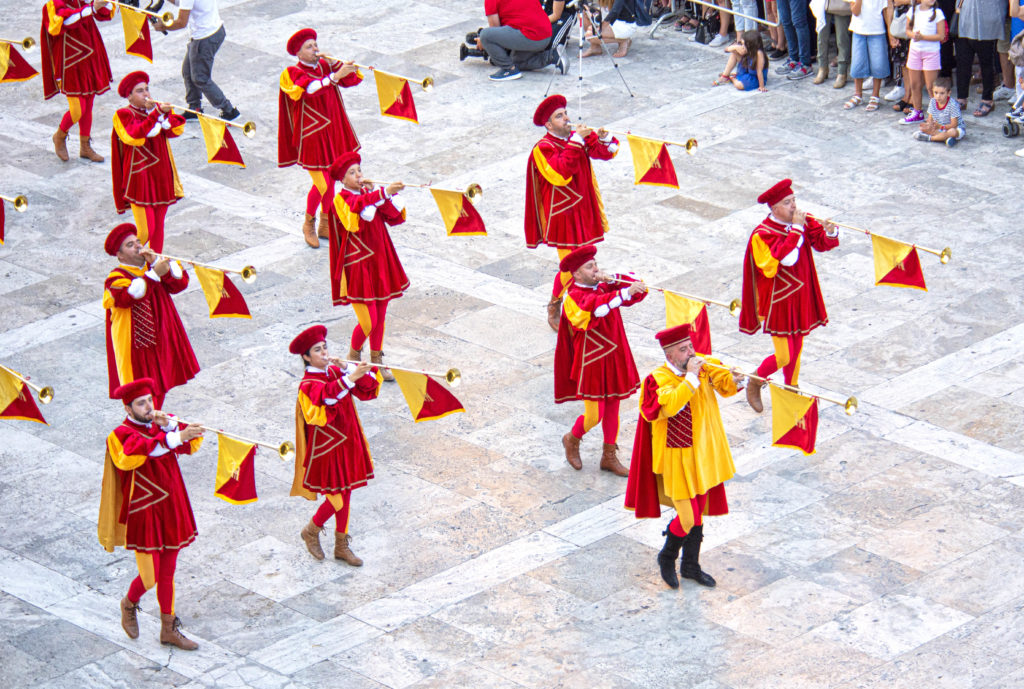
A closer view of a portion of the Ascoli Music Corps brass section playing ‘natural trumpets’ or ‘clarions’.
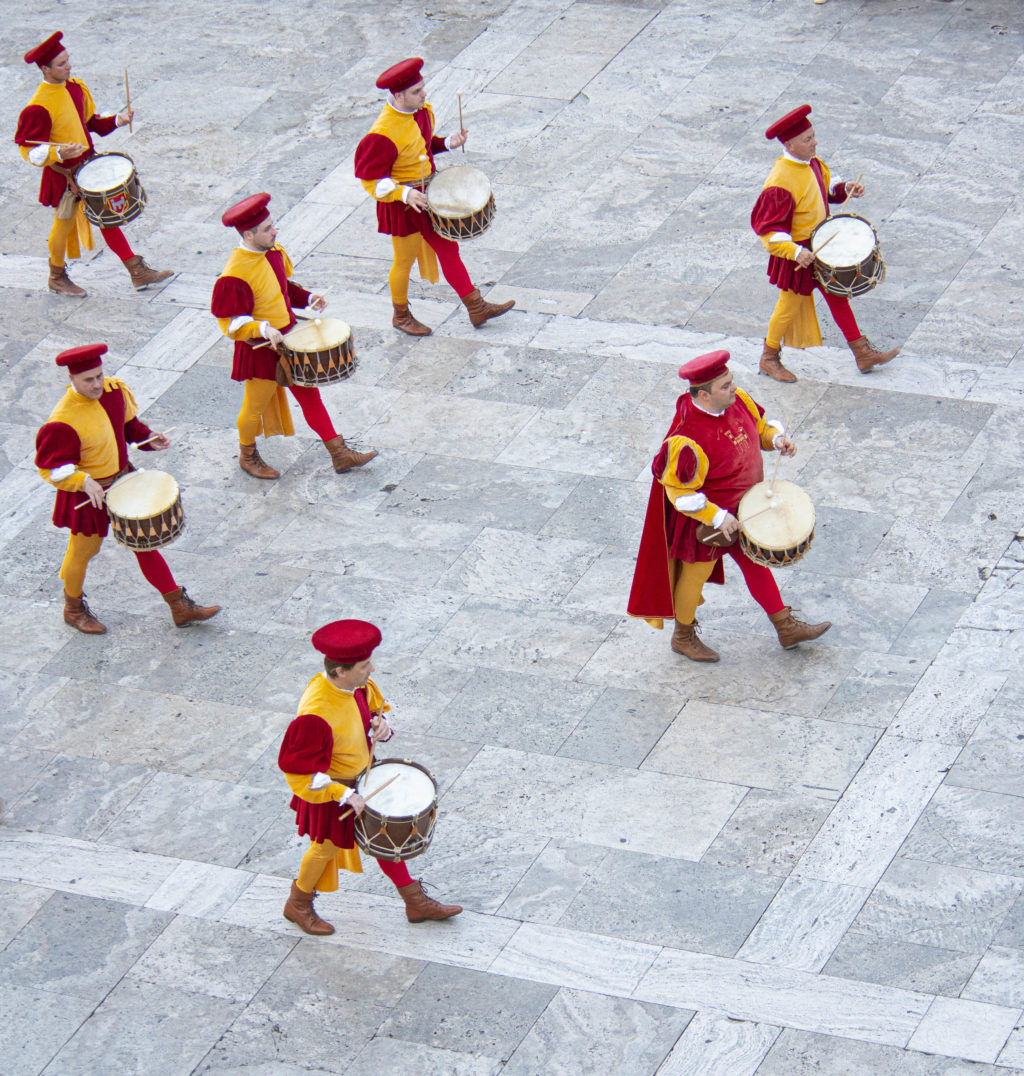
Close-up of a portion the Ascoli Musio Corps drum section.
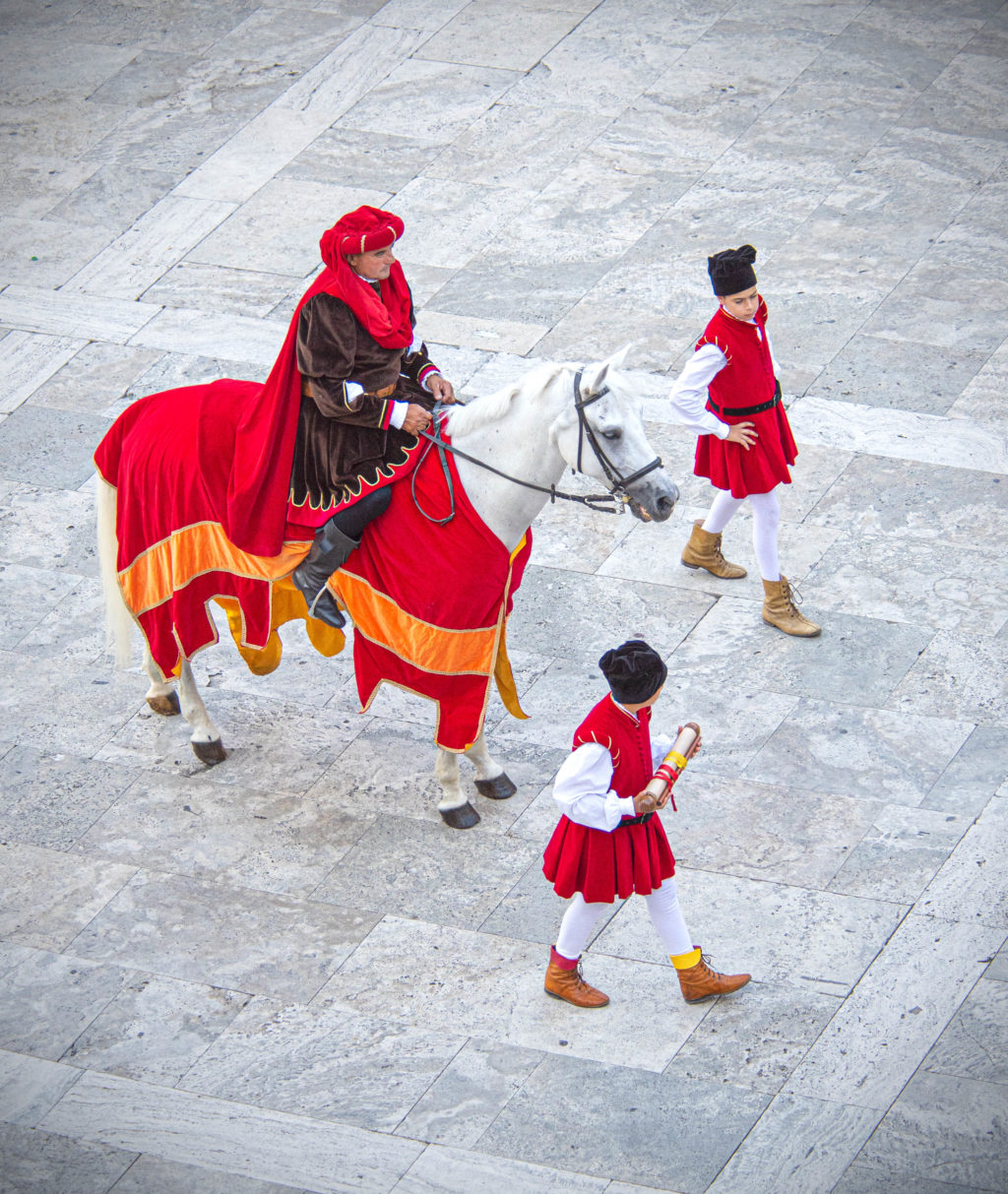
The mounted official, il Banditore, in charge of the Quintana. The young Paige carries the rolled declaration (perganena) of the Quintana to be read at the beginning of the Joust contest.
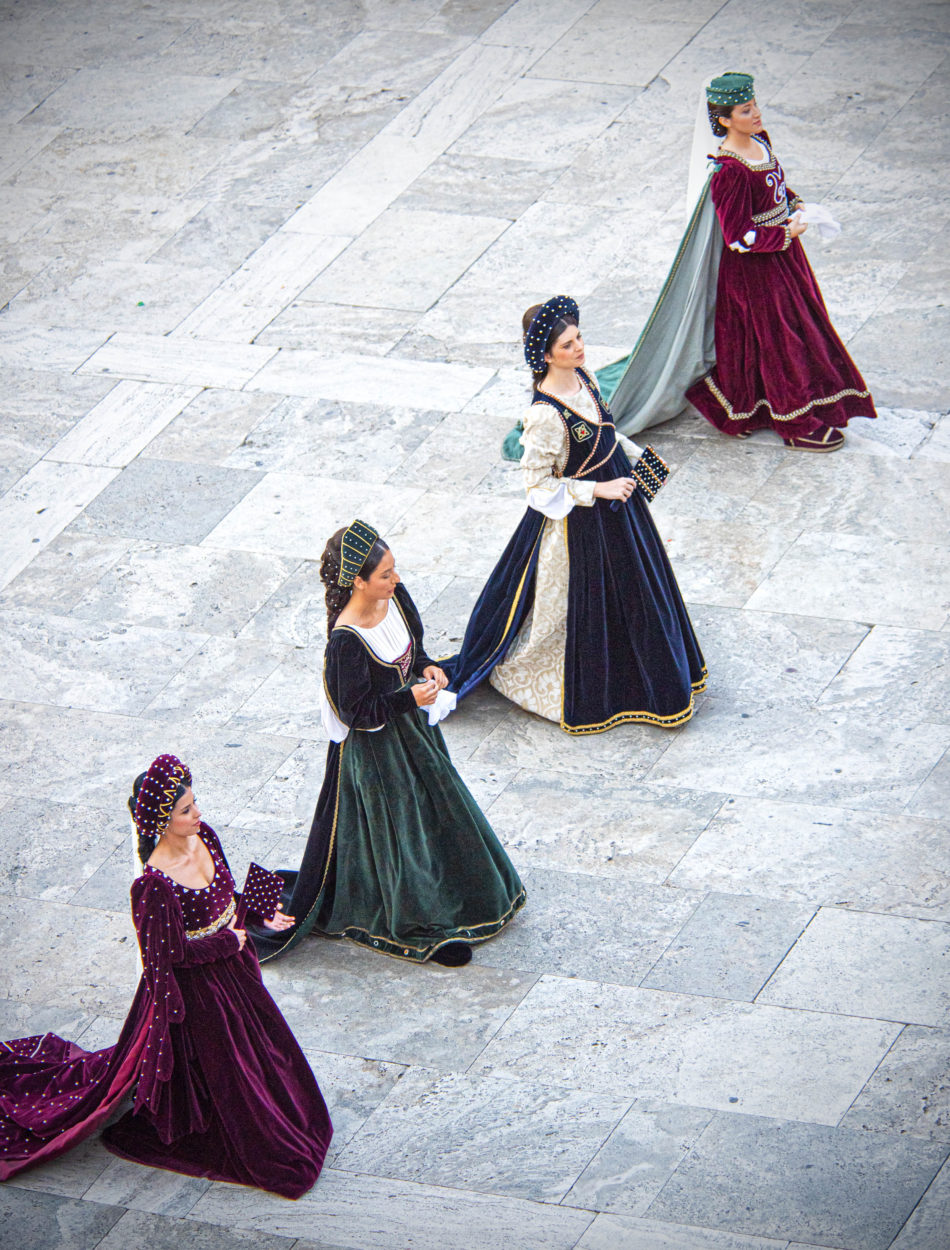
Nobel ladies of the Commune of Ascoli next lead the procession.
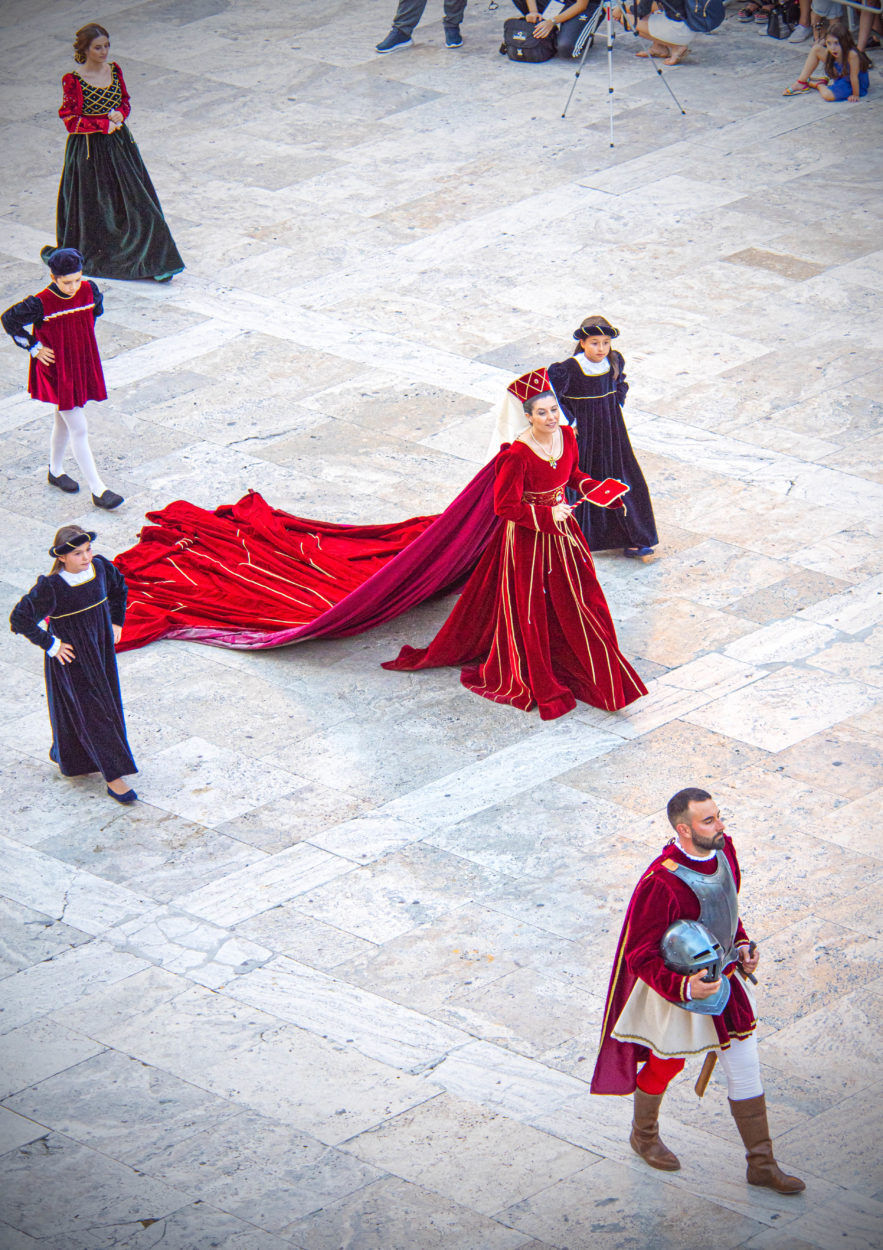
The Castellane representing Arquata del Tronto. This particular community was essentially destroyed in the earthquakes of several years ago.
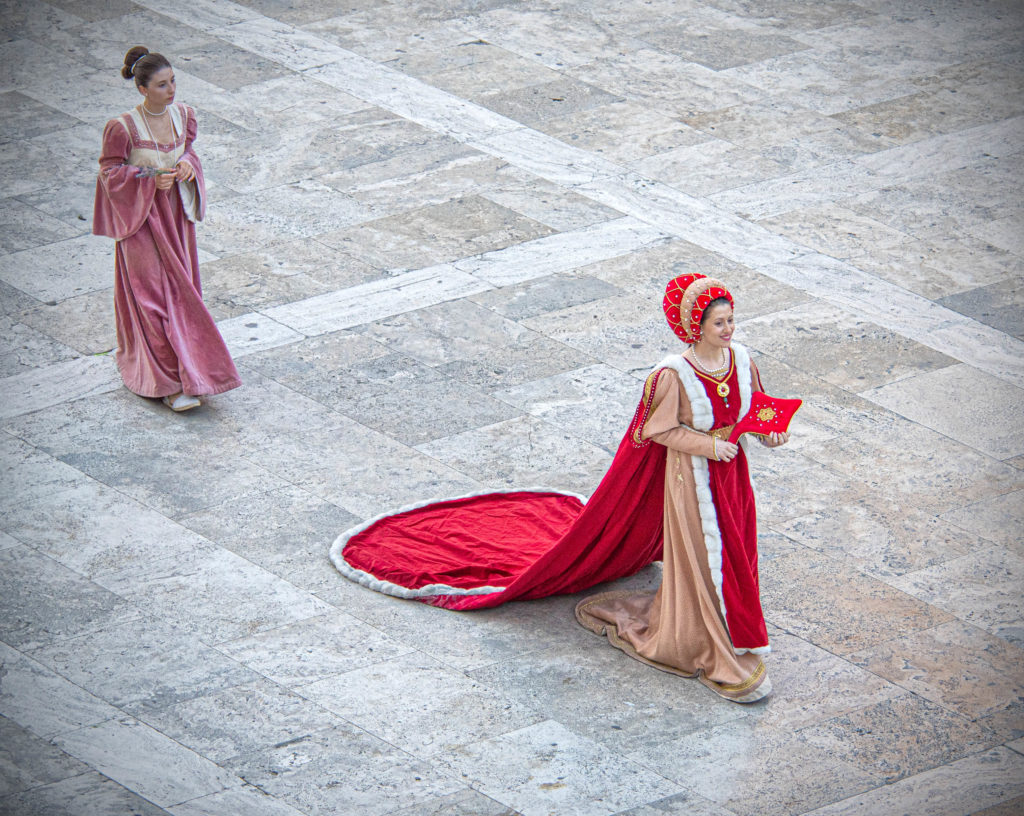
The Castellane of Rifaberarola with her lady in waiting following.
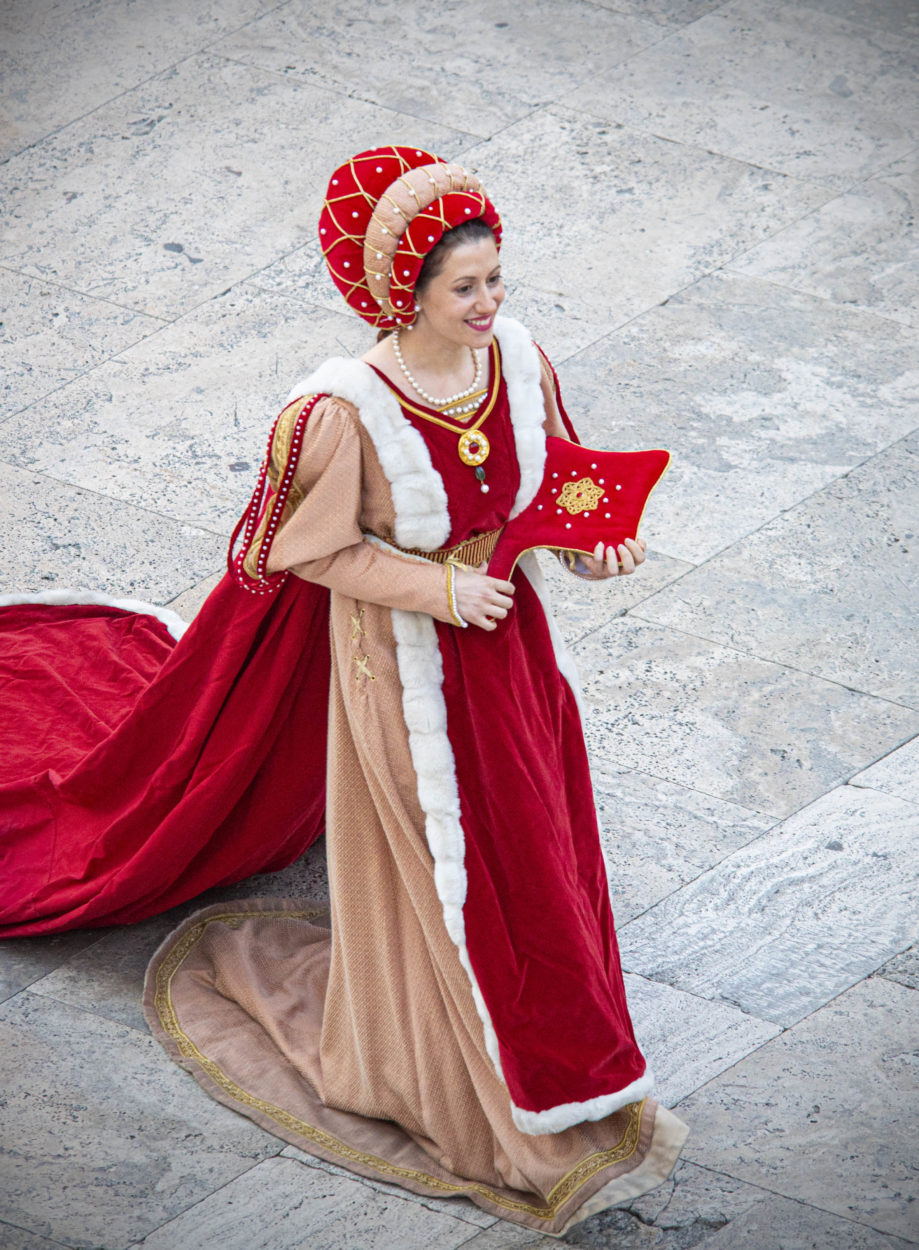
The Castellane in close-up.
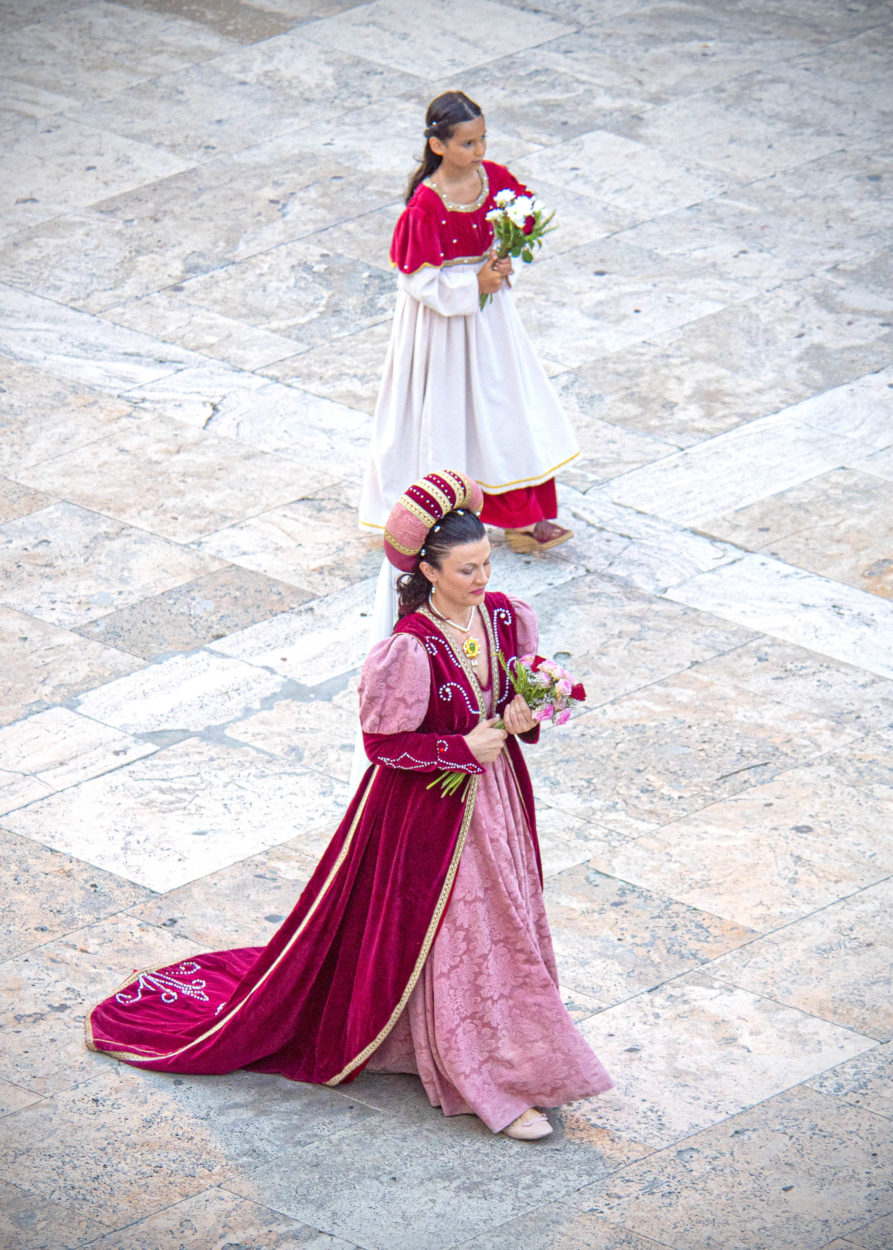
A Castellane and her young attendant.
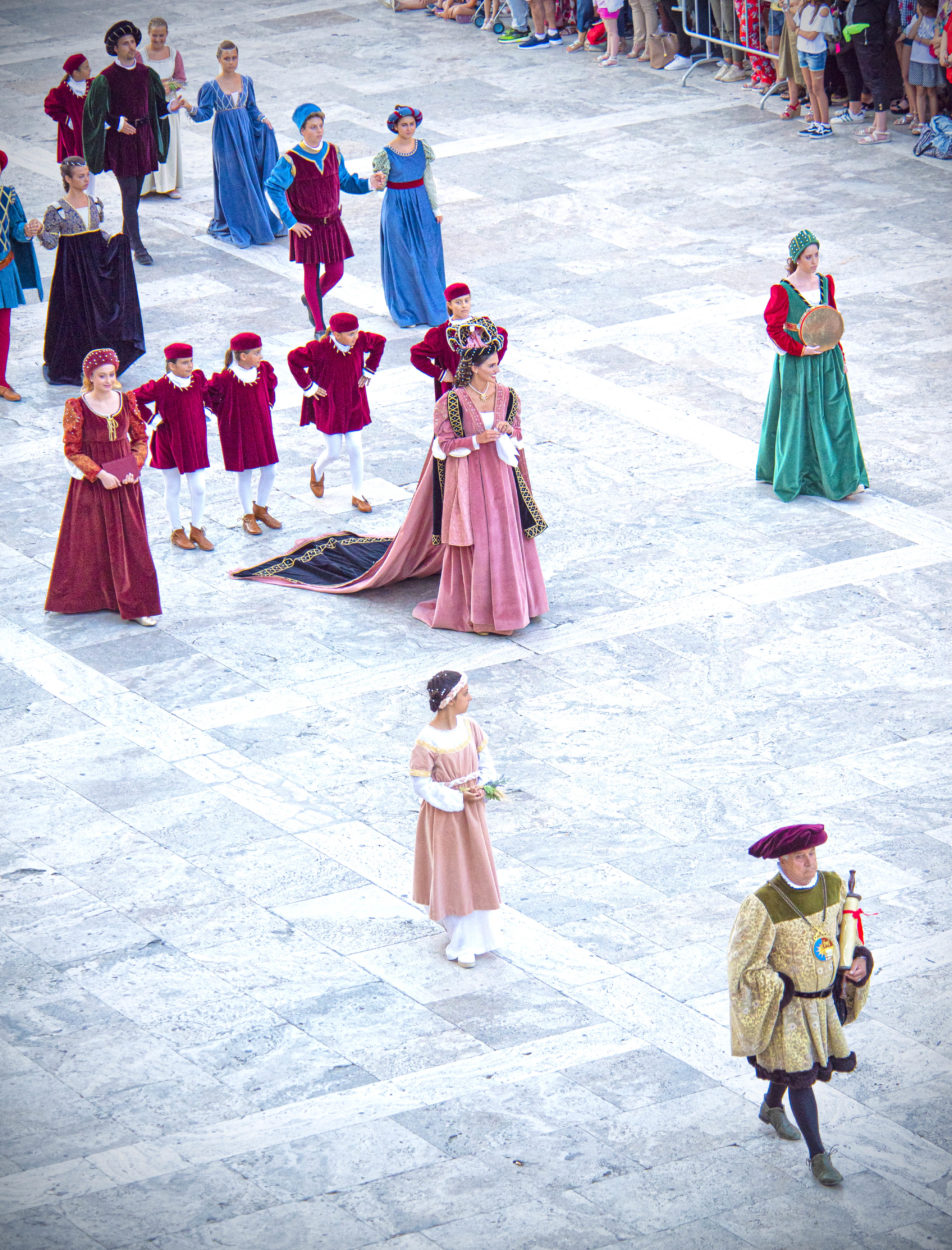
The ‘Dama’ of the Sestieri Porta Solesta and her court.
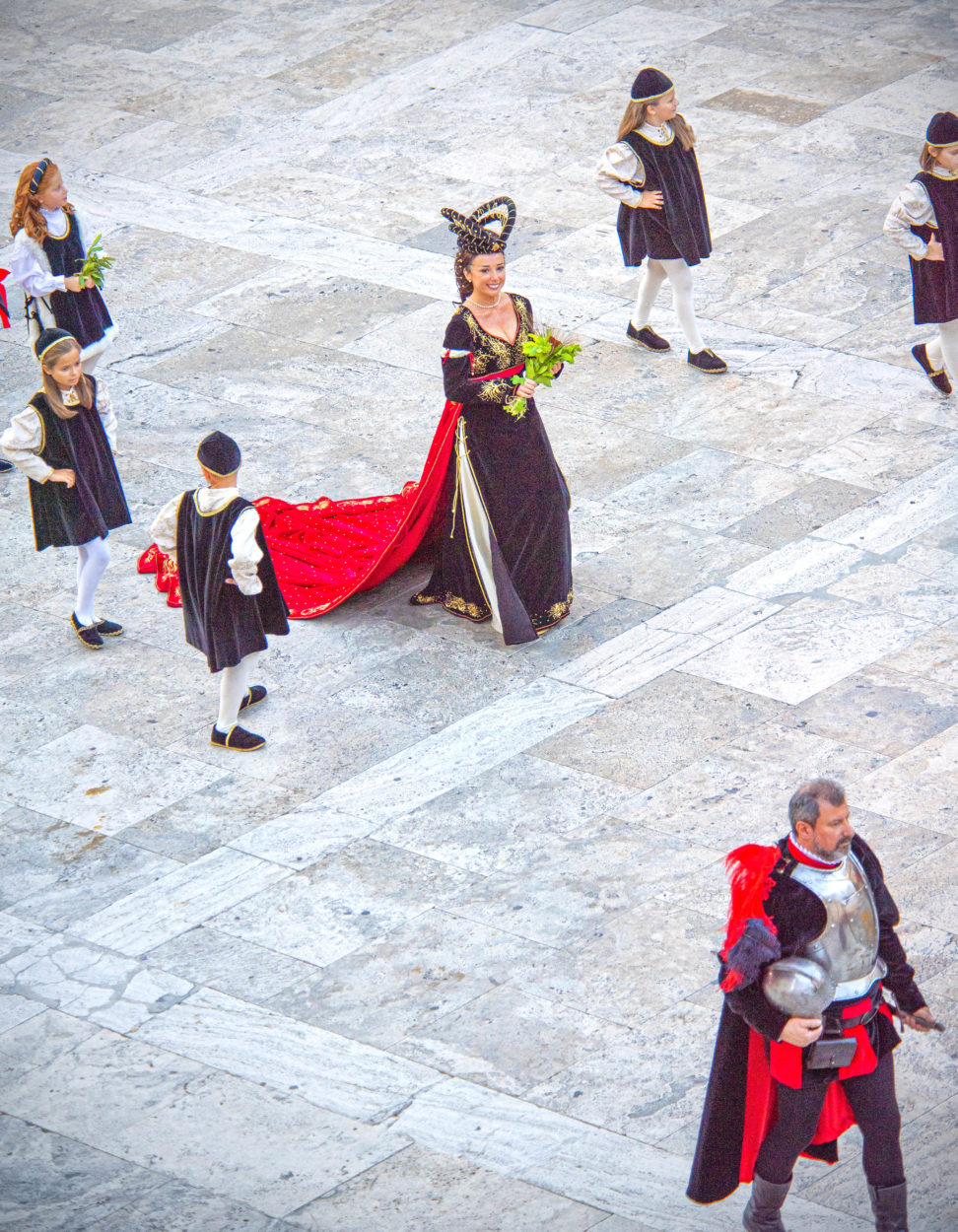
The ‘Dama’ of Sestieri Porto Trufile.
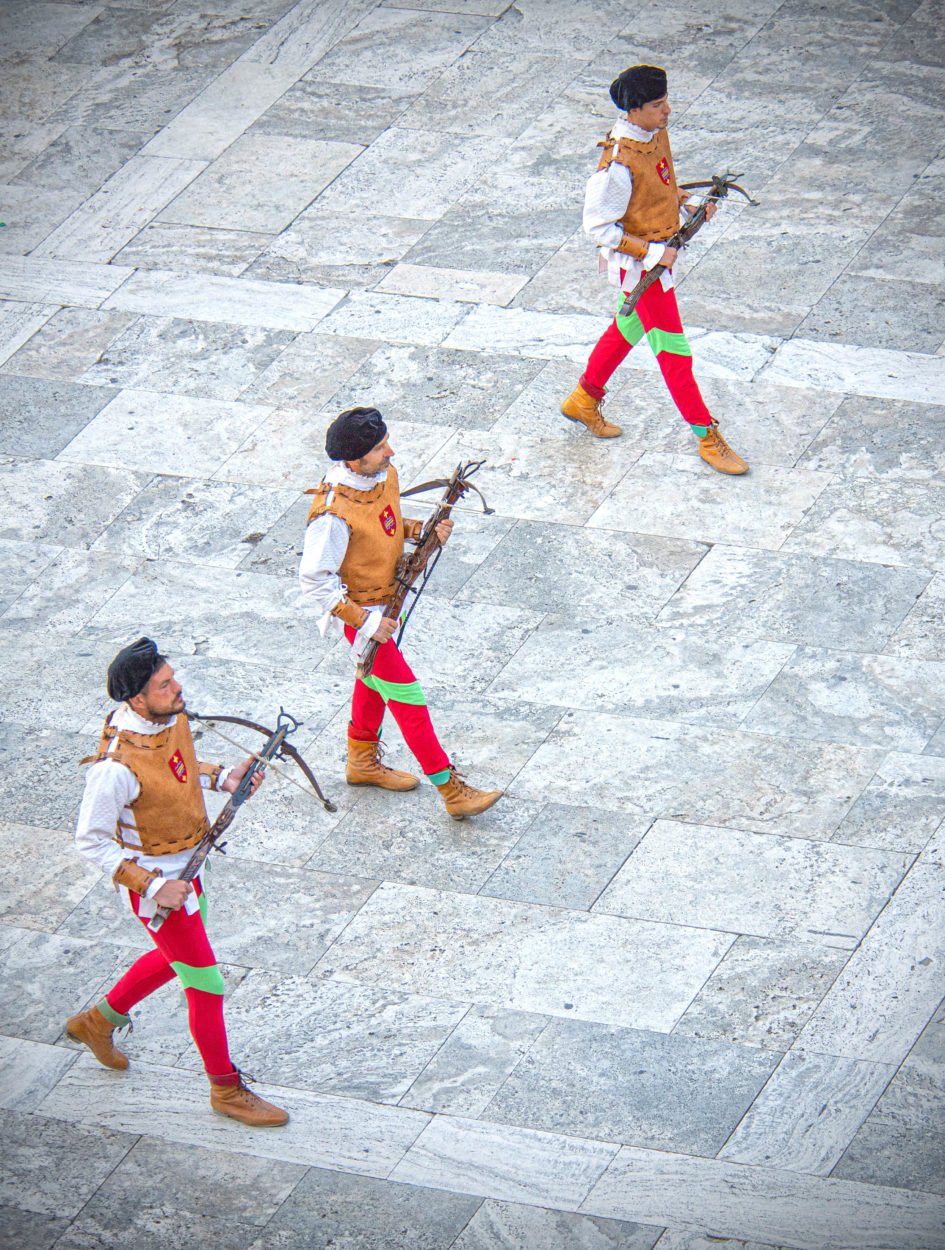
The ‘Balestieri’‘ or crossbowman.
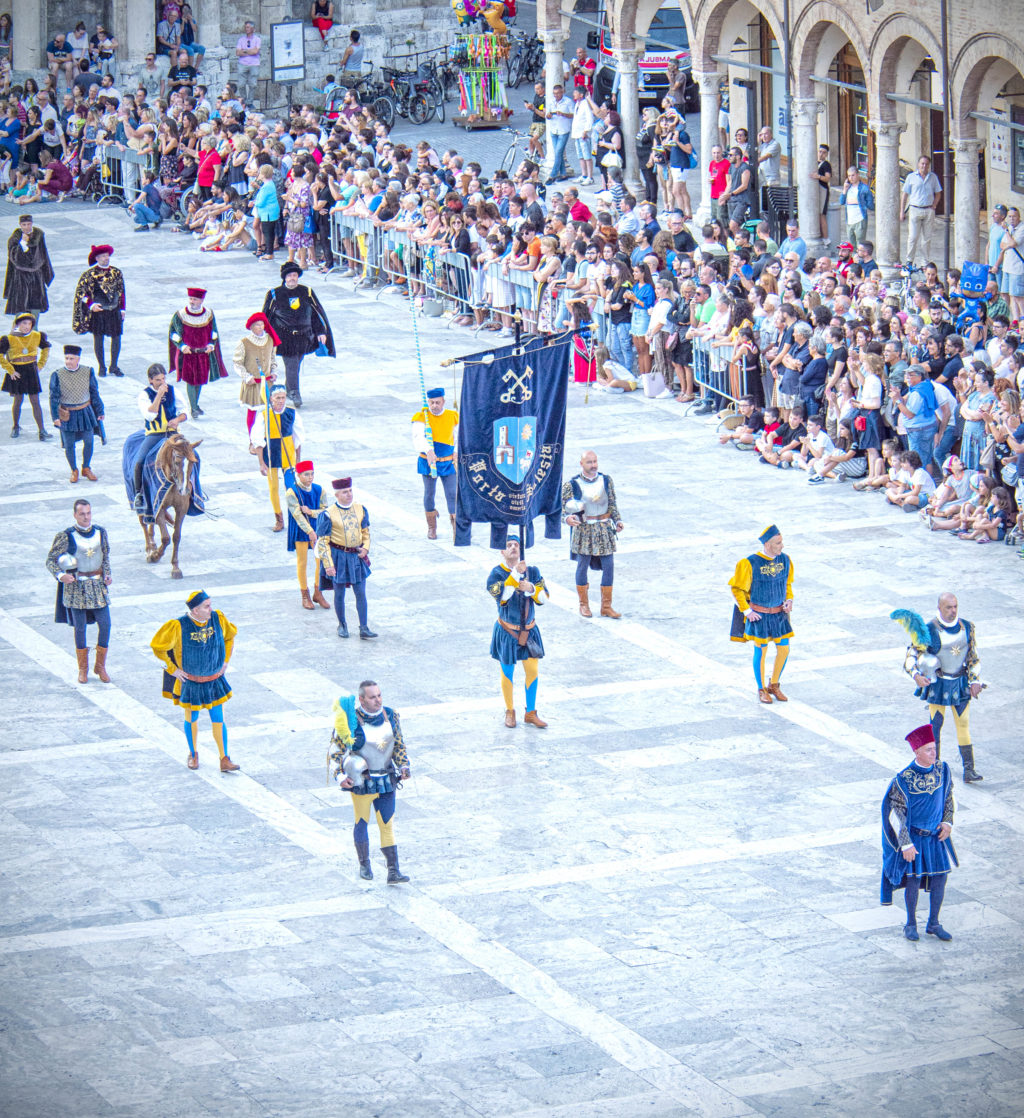
The Sestieri Porta Solesta enters Piazza del Popolo.
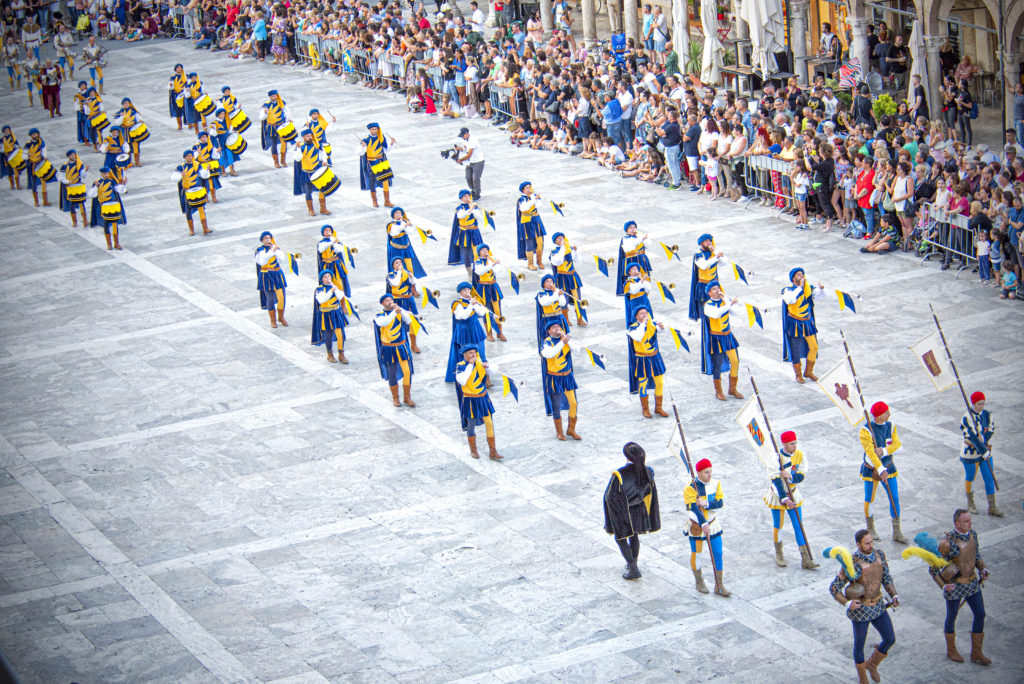
The knights and musical corps of Sestieri Porta Solesta.

The knight or ‘Cavalieri‘ of the Sestieri Porta Solesta, Luca Innocenzi. He later became the victor in the July Joust.
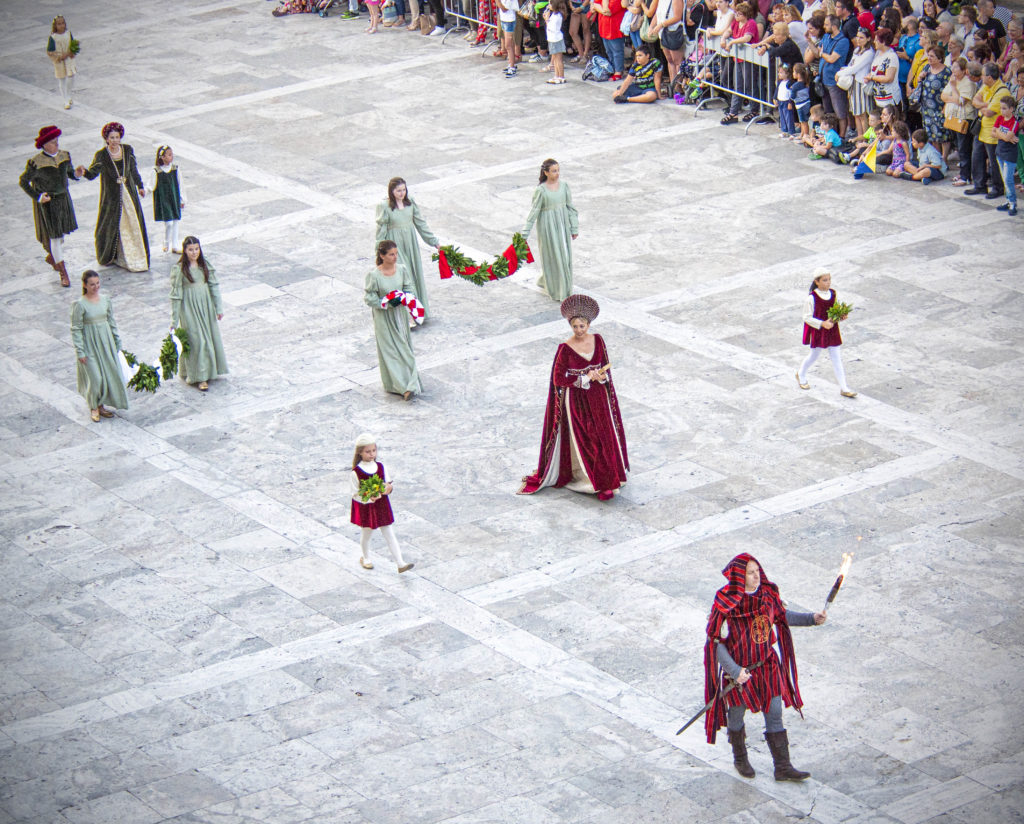
The ‘Dama’ of the Sestieri Piazzarola and her court.
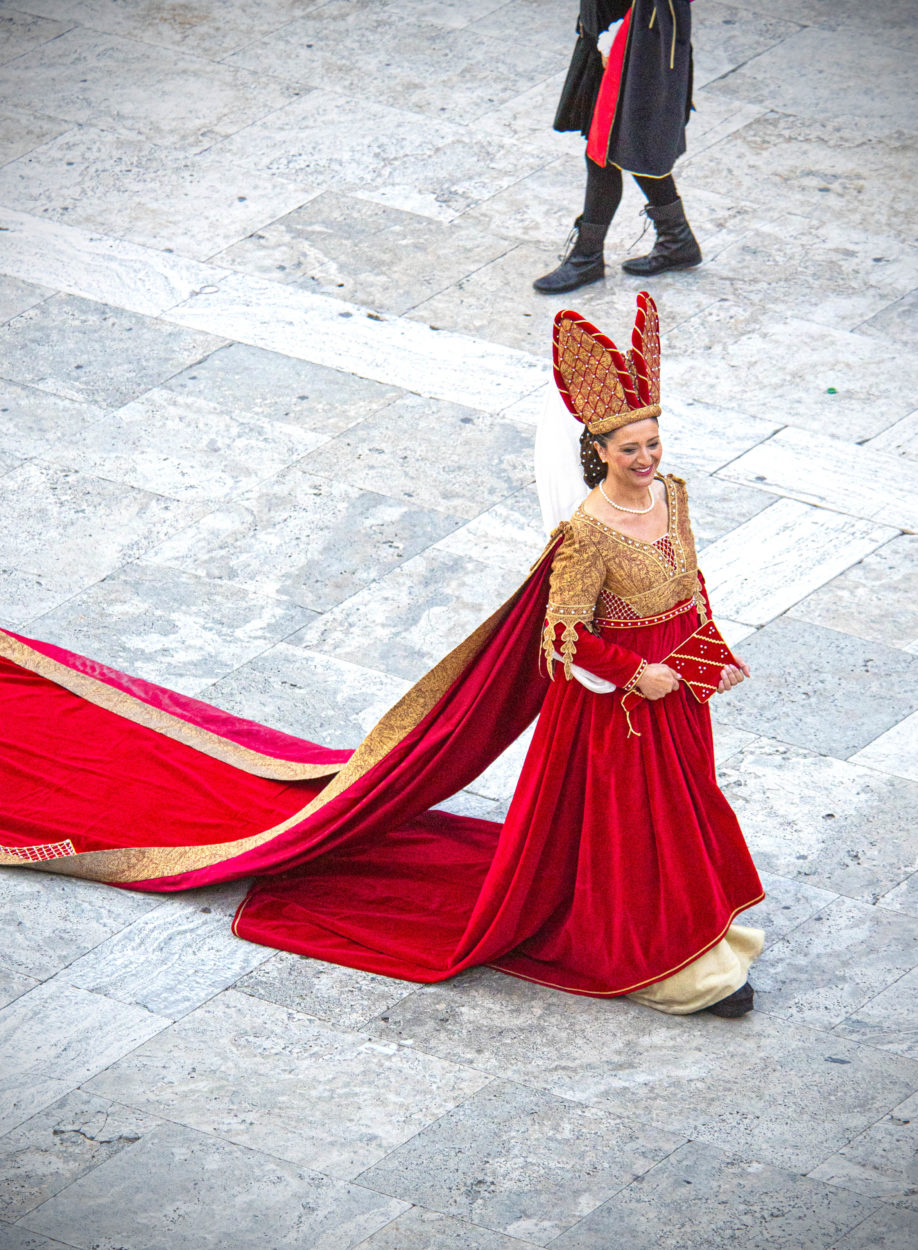
A ‘Dama’ in a flowing gown with a long train.
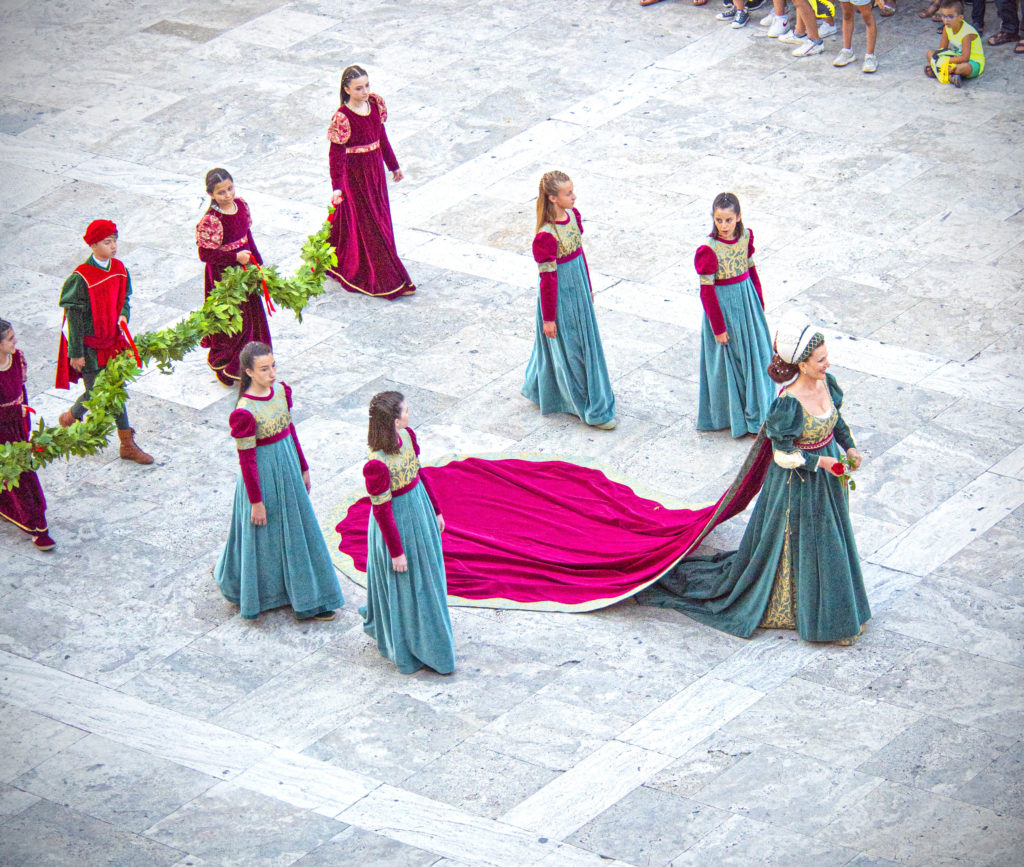
The ‘Dama‘ of the Sestieri Saint Emidio and her court.
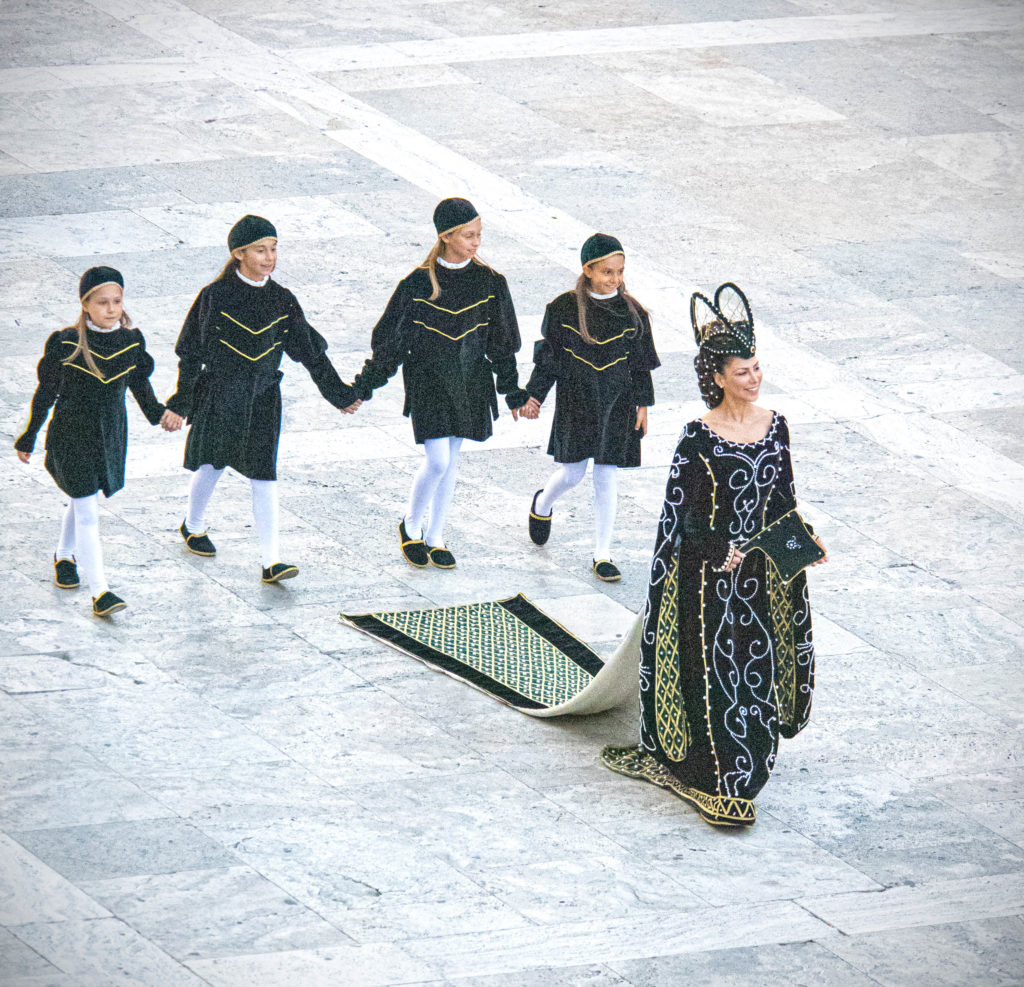
The ‘Dama’ of Sestieri Porto Maggiore and her attendants.
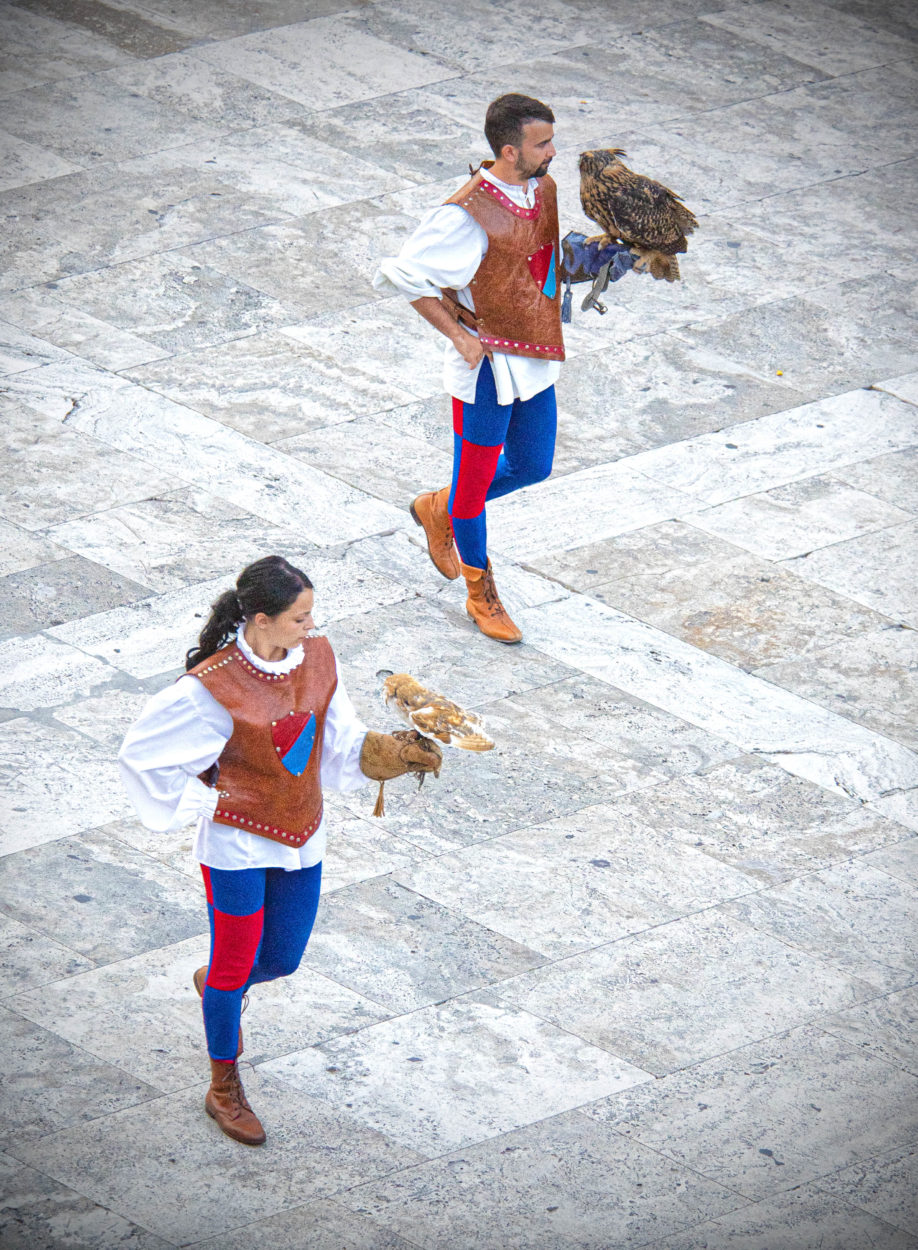
‘Il Falconieri’ or falconers of Sestieri Porta Romana.
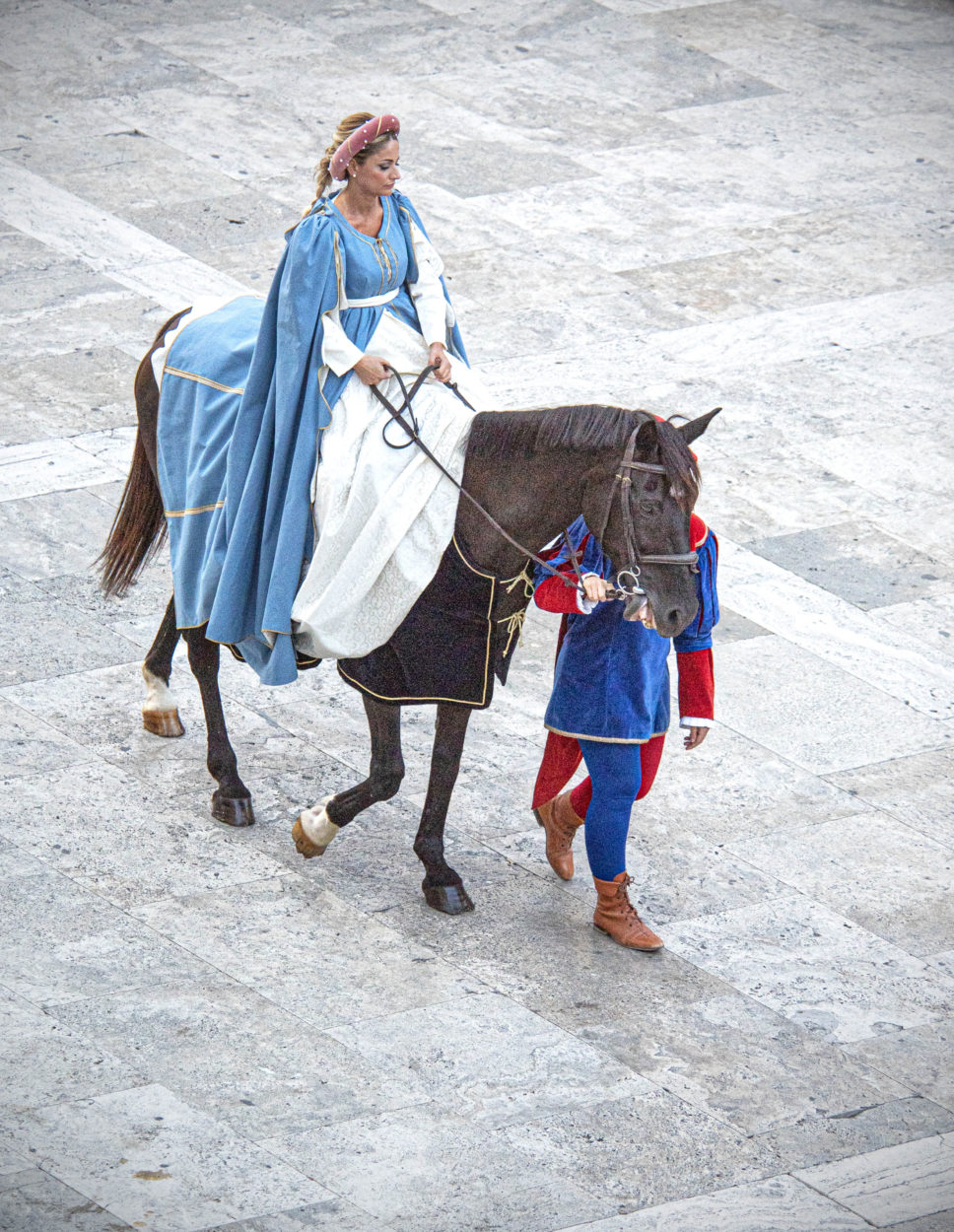
Equestrian lady of Sestieri Porta Romana.
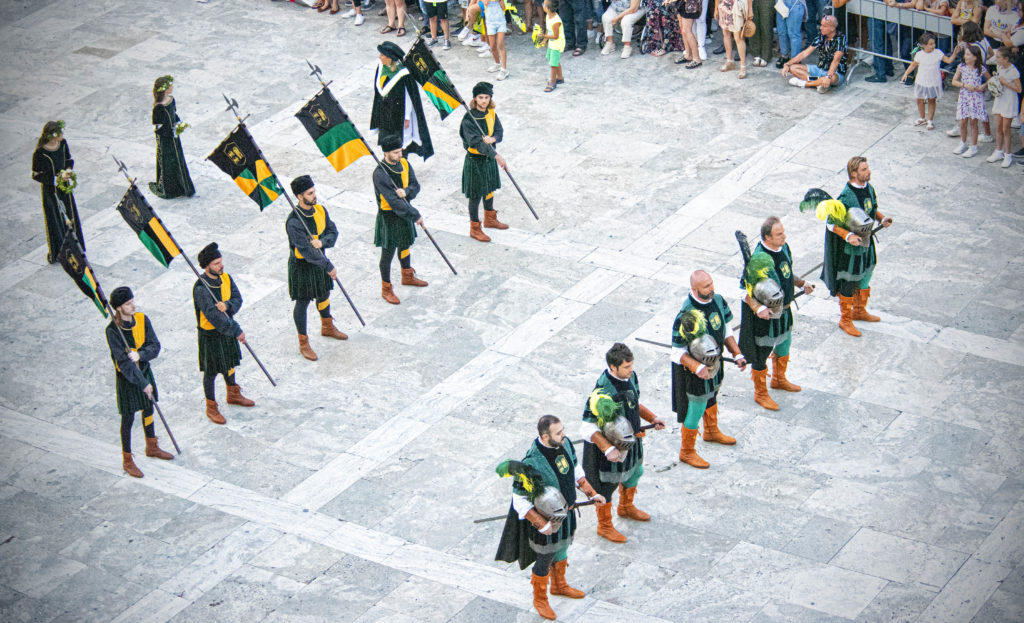
The knights and standard bearers of the Sestieri Porto Maggiore.
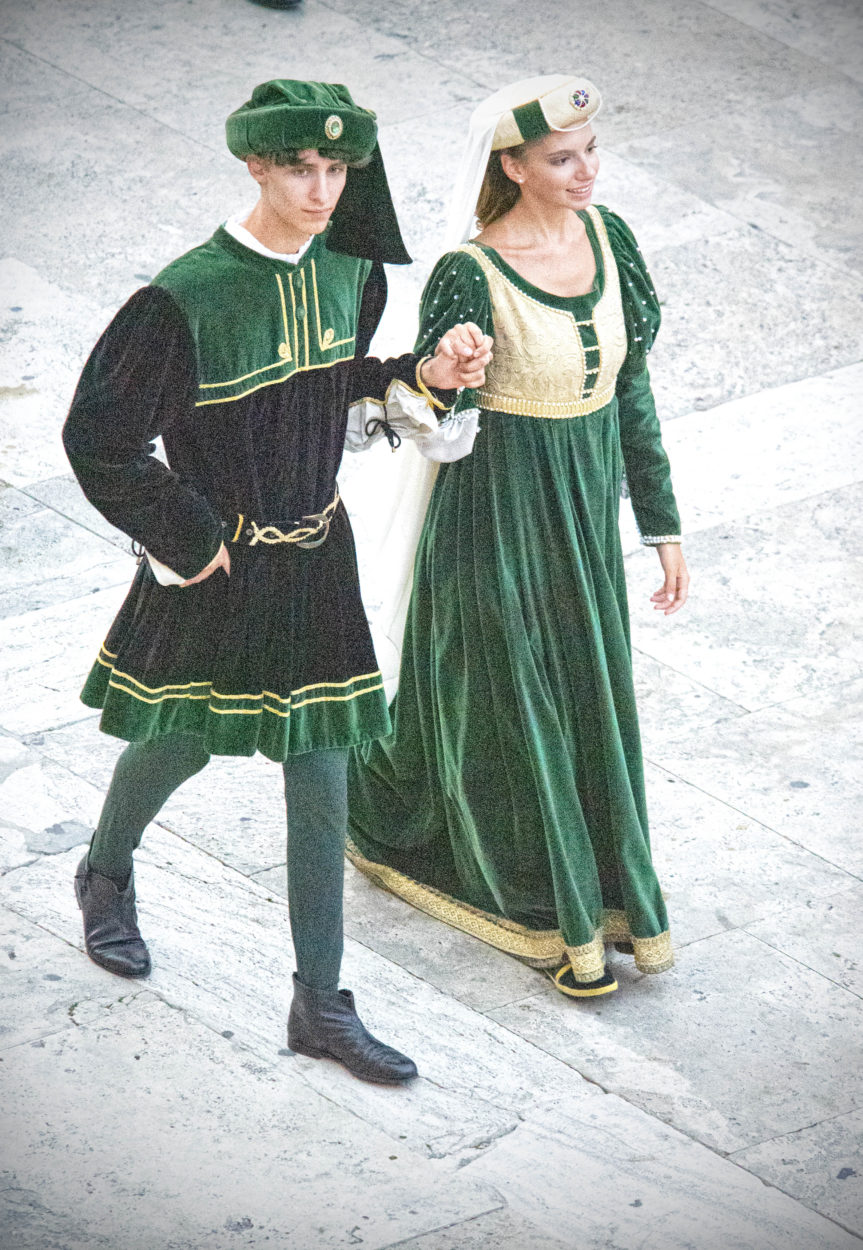
A Renaissance Porto Maggiore young couple.
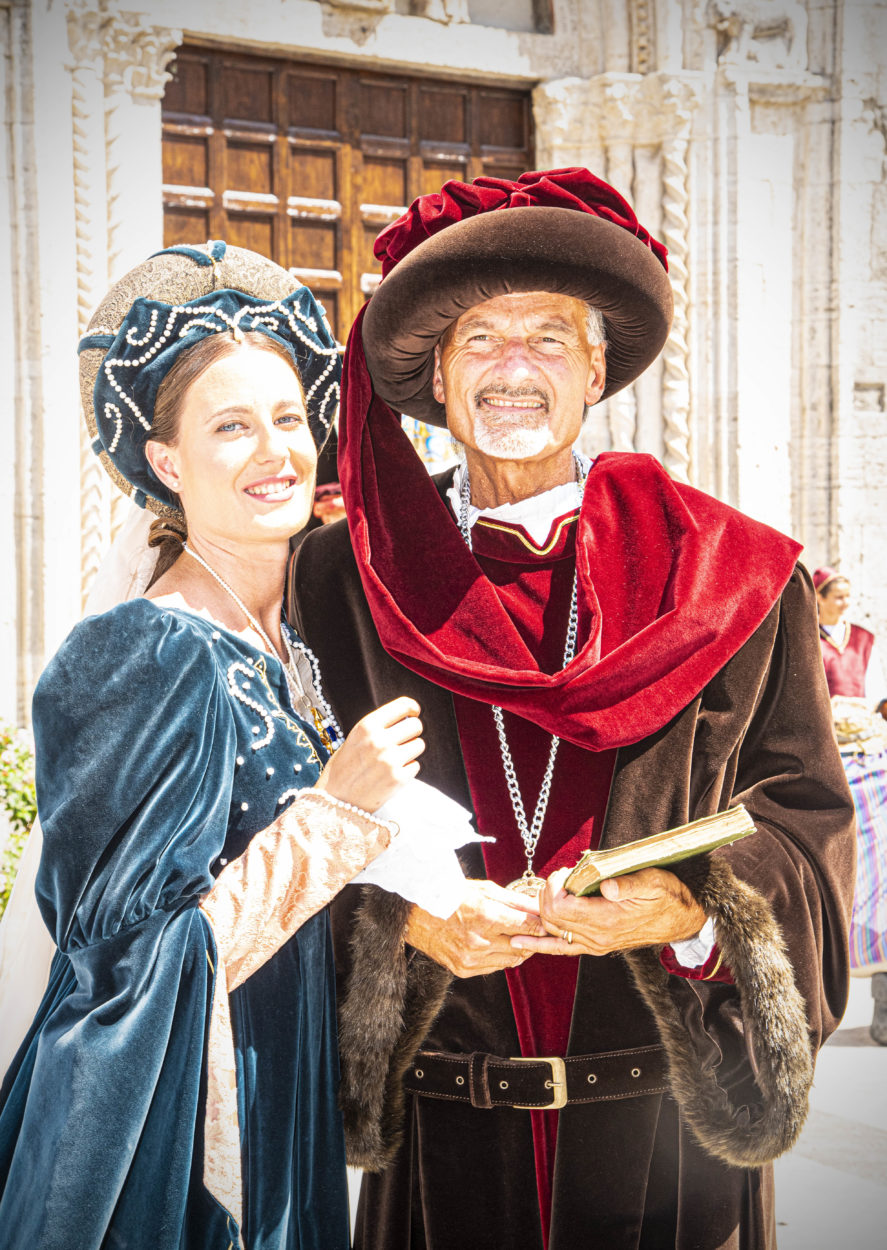
Representing Castel Aquasante Terme are the Castellano and the Castellana.
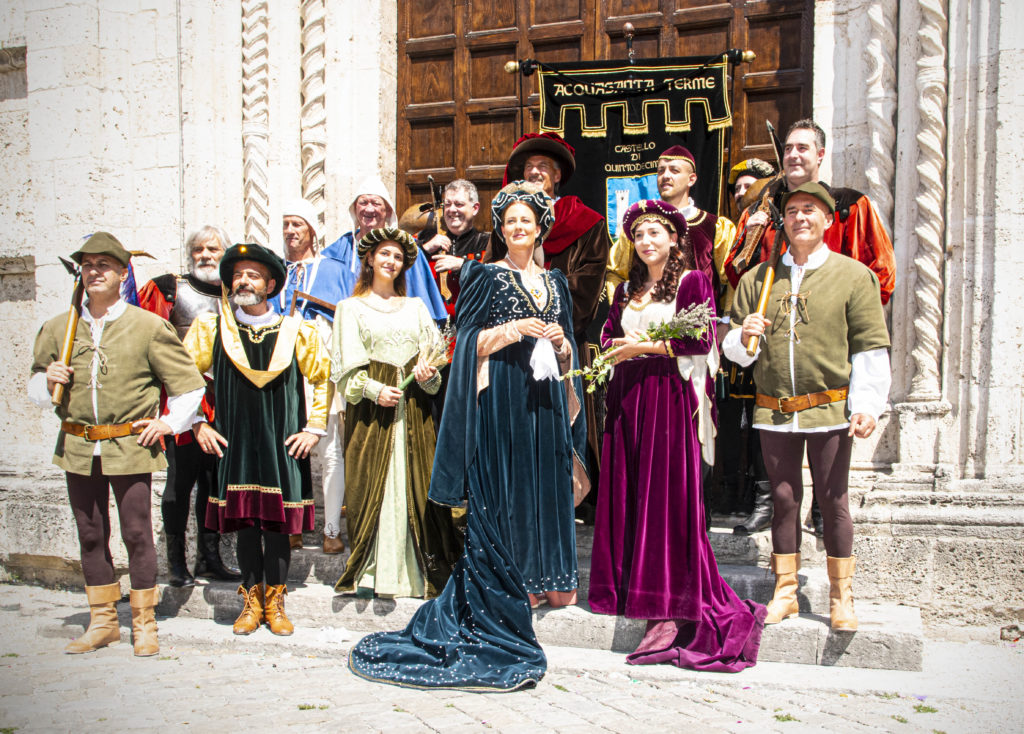
Castel Aquasanta Terme.
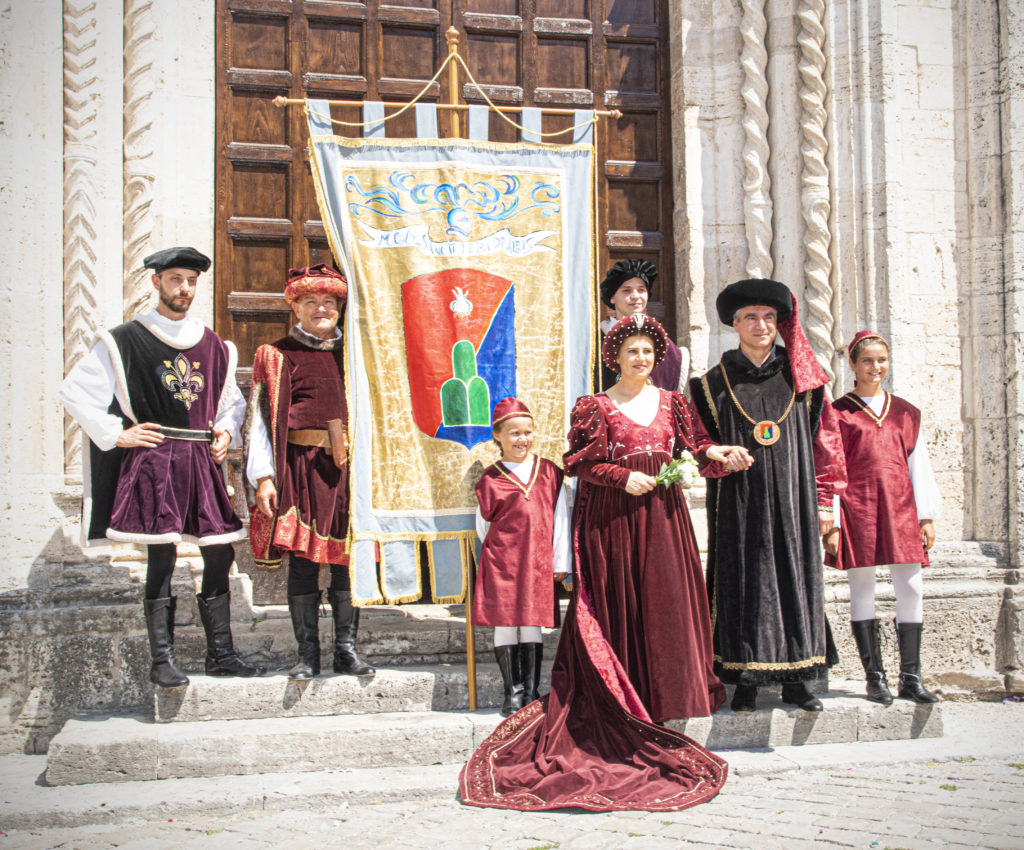
The community of Castorano.
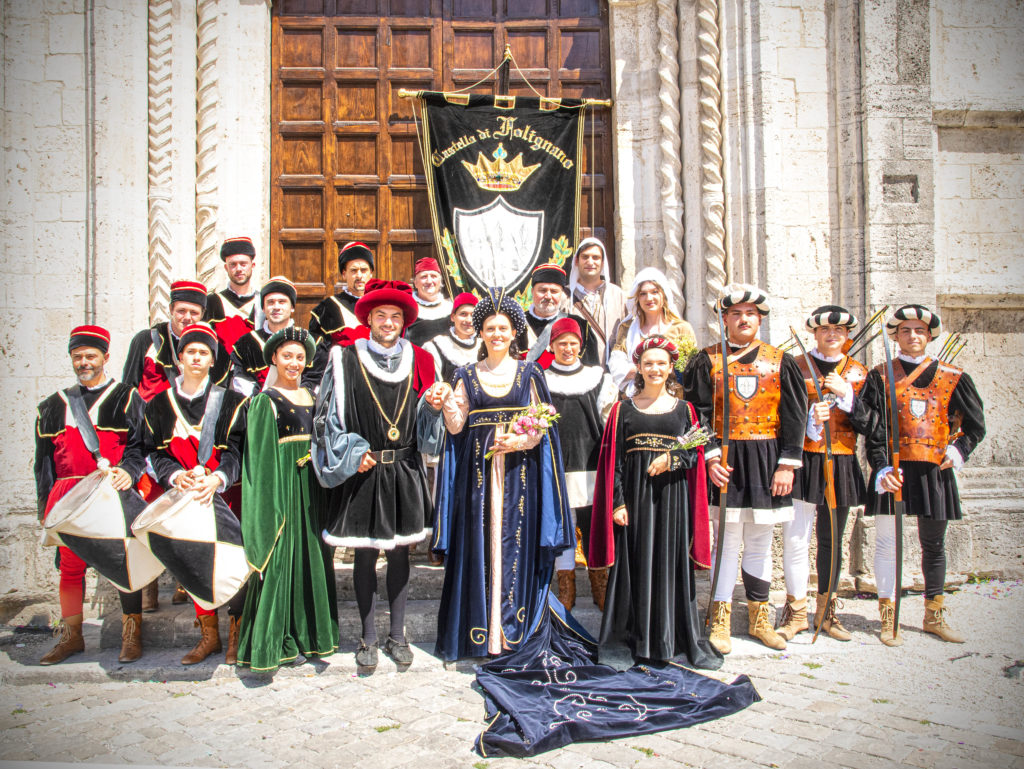
Castel di Folinignano.
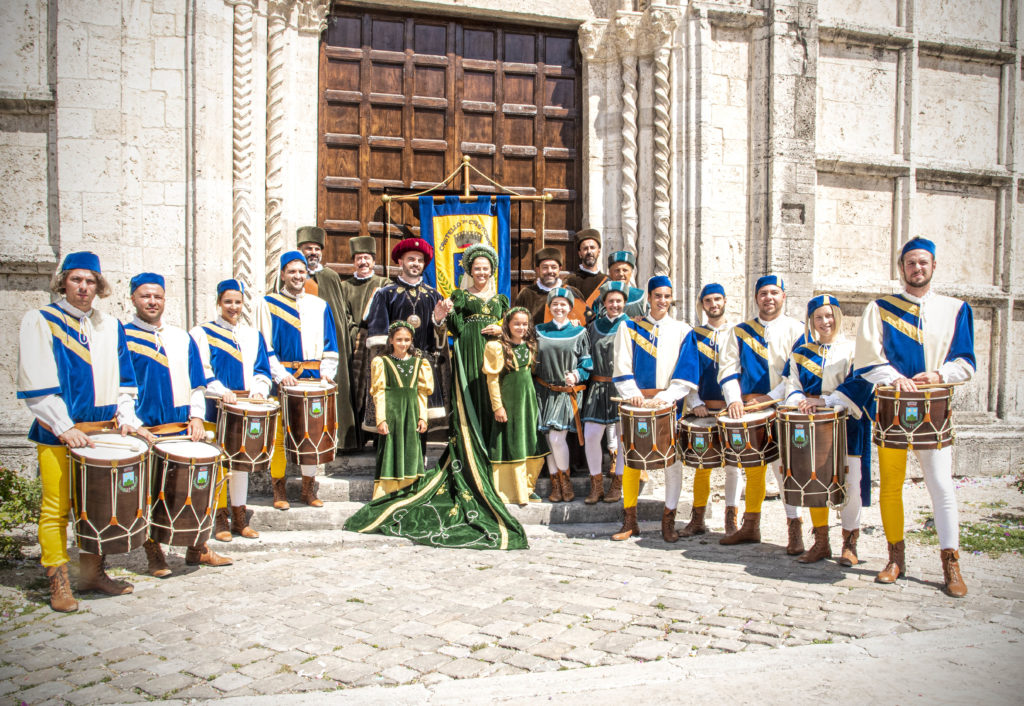
The Castel di Montemonaco.
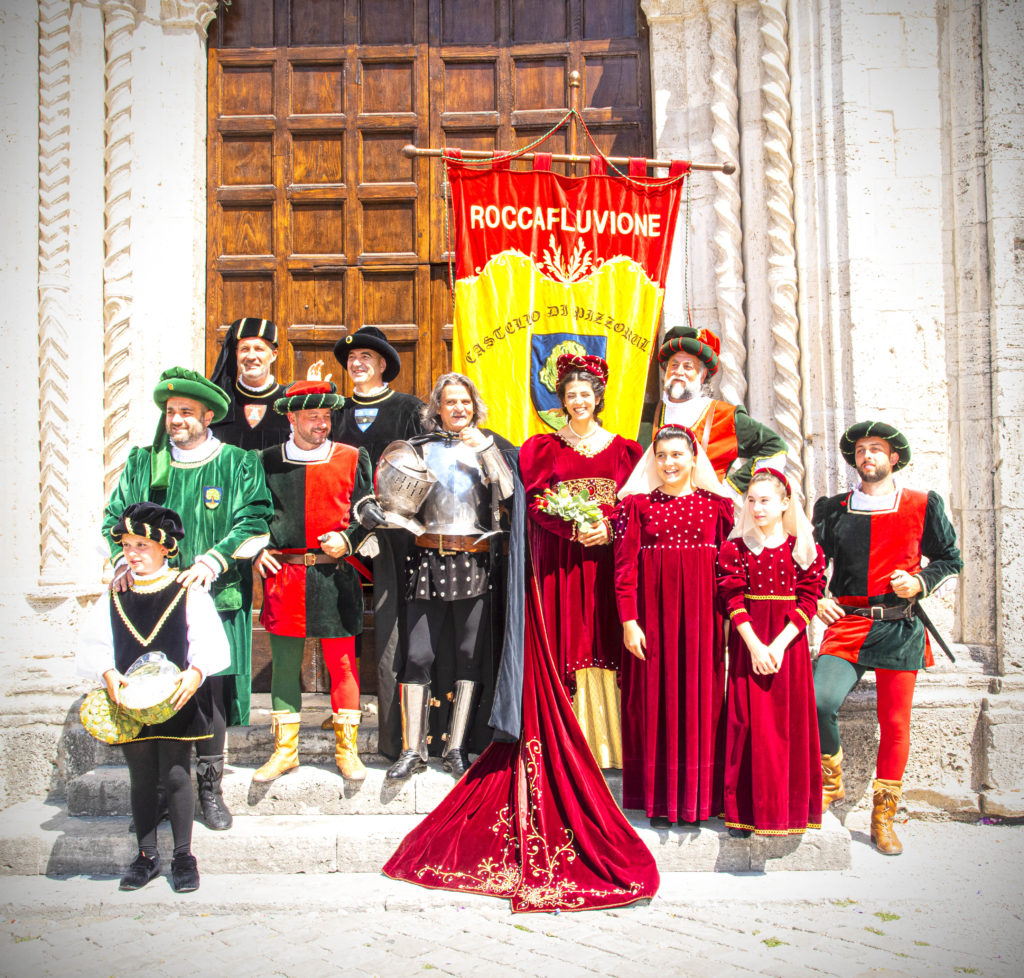
Castelezzo de Pazzorullo of Roccafluvione.
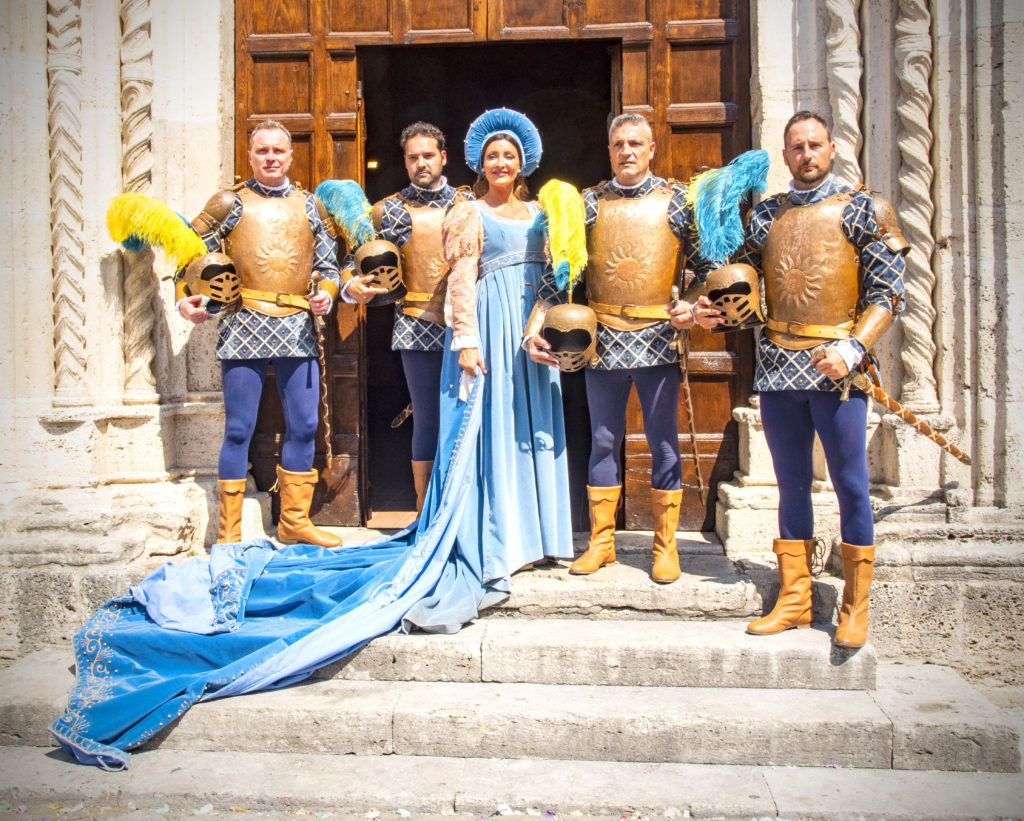
The ‘Dame’ and knights of the Sestieri Porto Solesta.
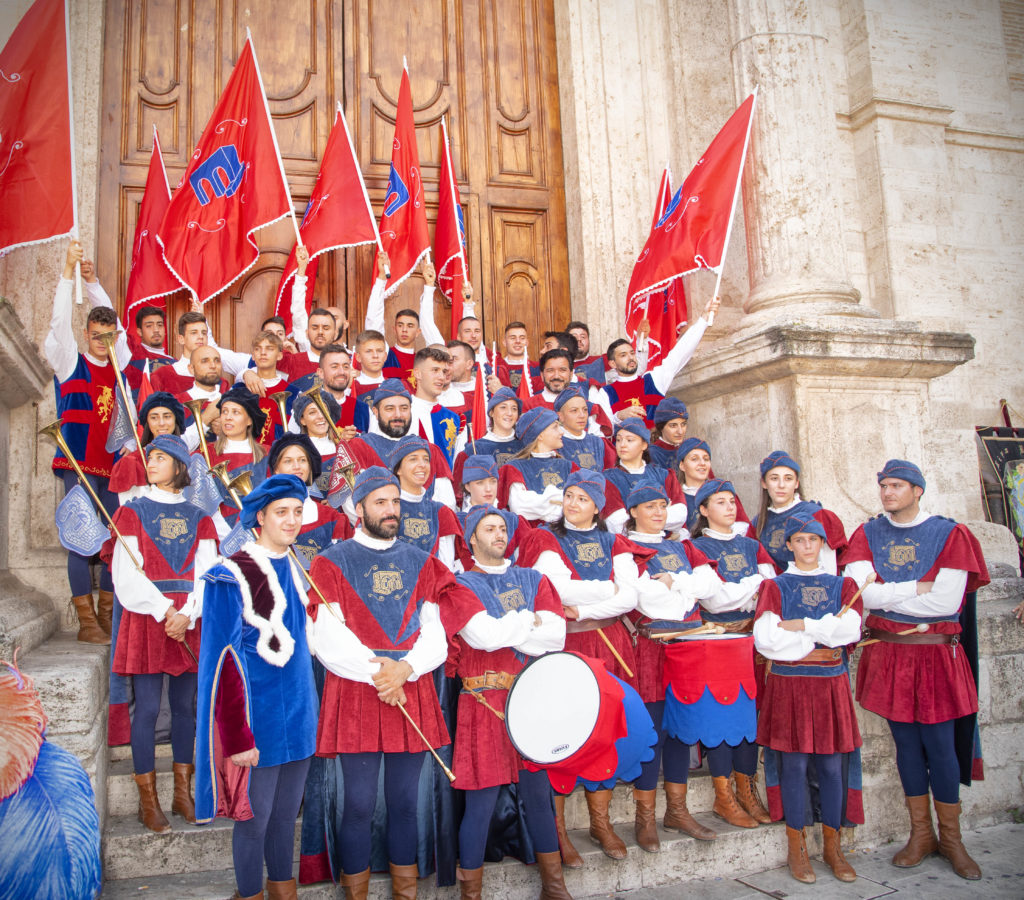
The musical corps and ‘sbandieteri’ of the Sestieri Porta Romana, Porta Romana won the Joust in the August contest.

The ‘Dama’ of the Sestieri Porta Romana.
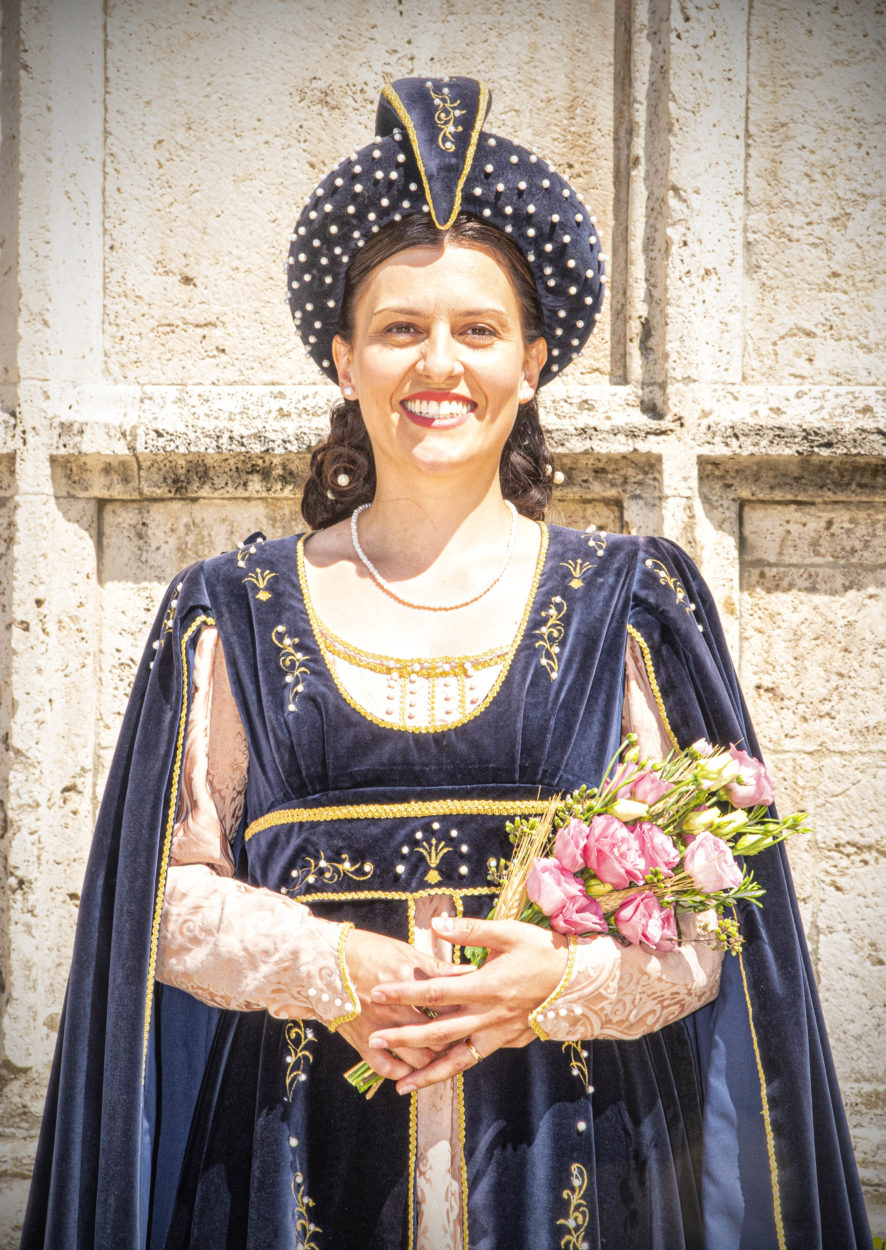
The ‘Dama’ of Castel di Folignano.
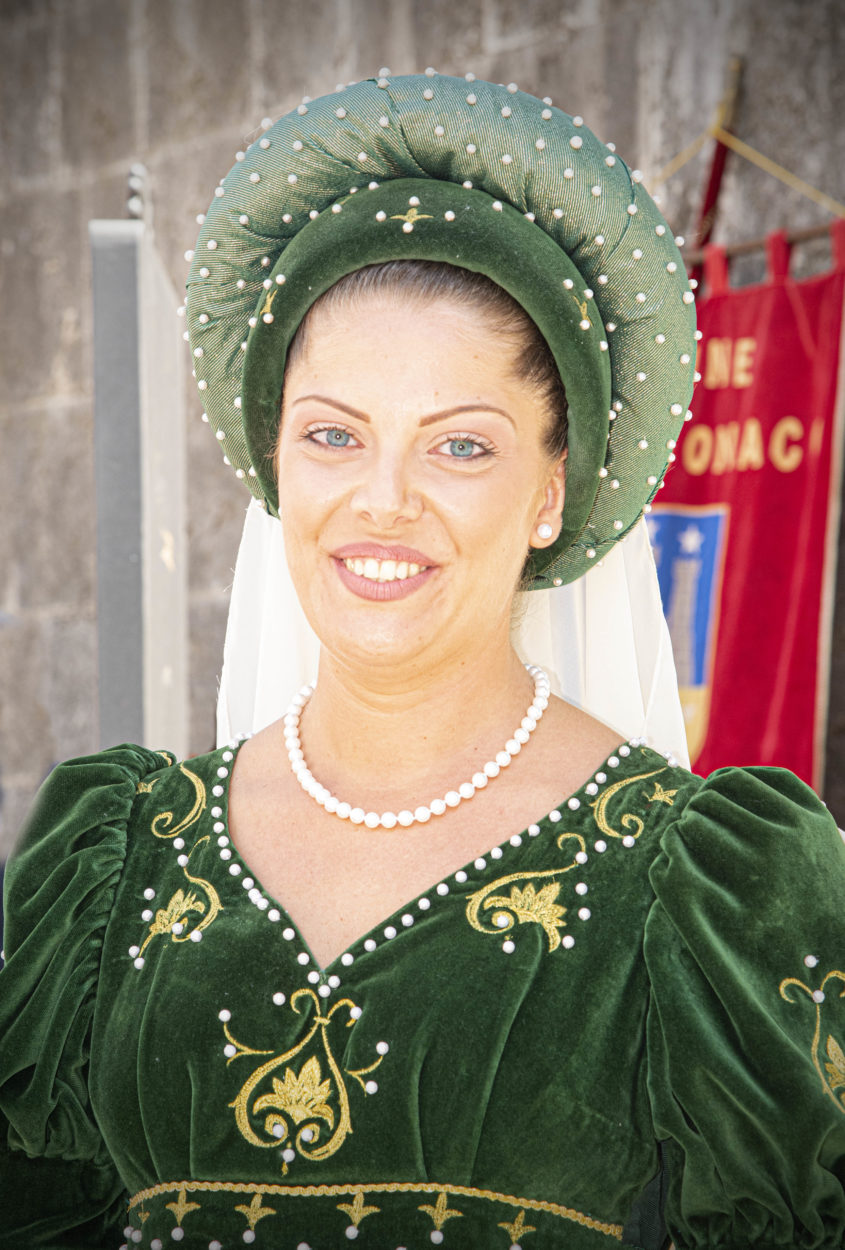
The ‘Dama’ of Commune Montemonaco.
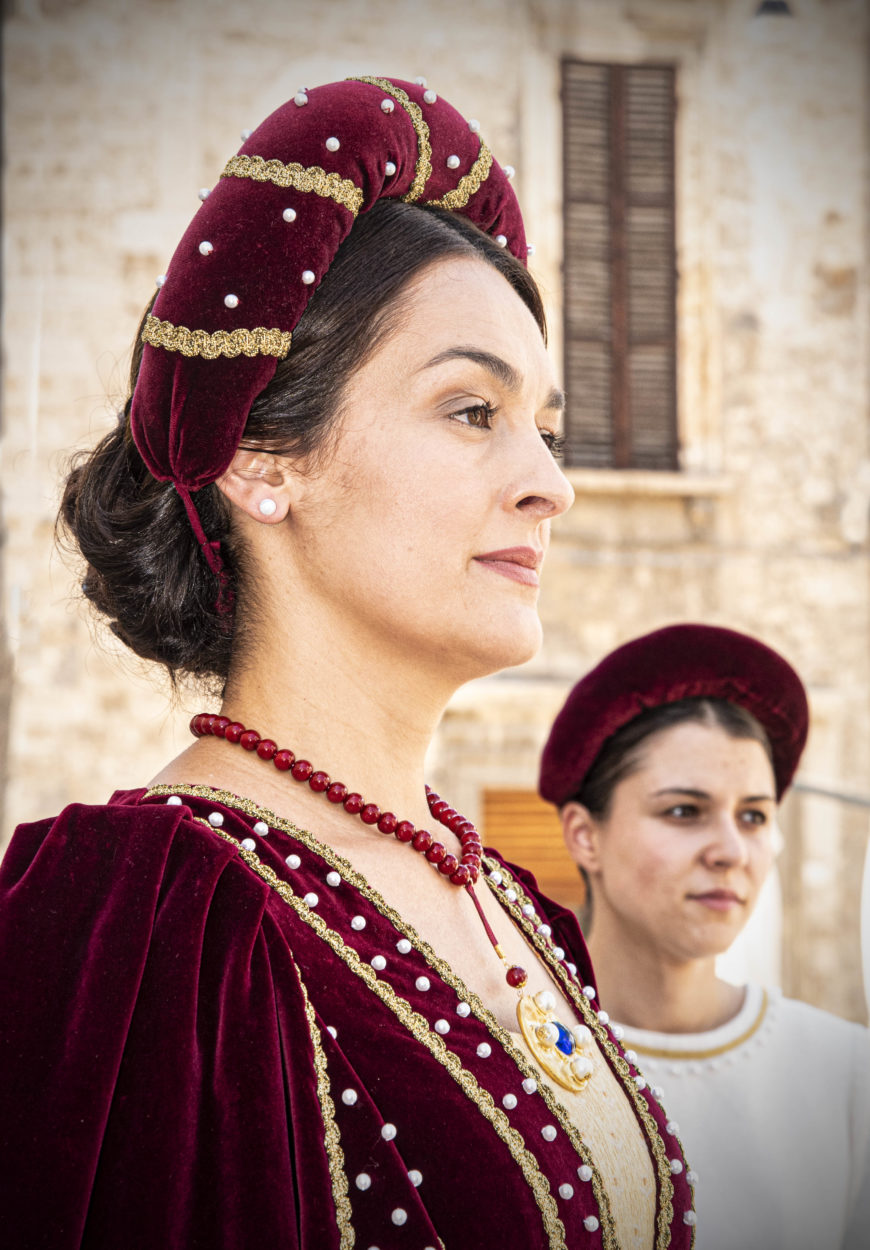
A nobles lady of bearing representing Montalto.
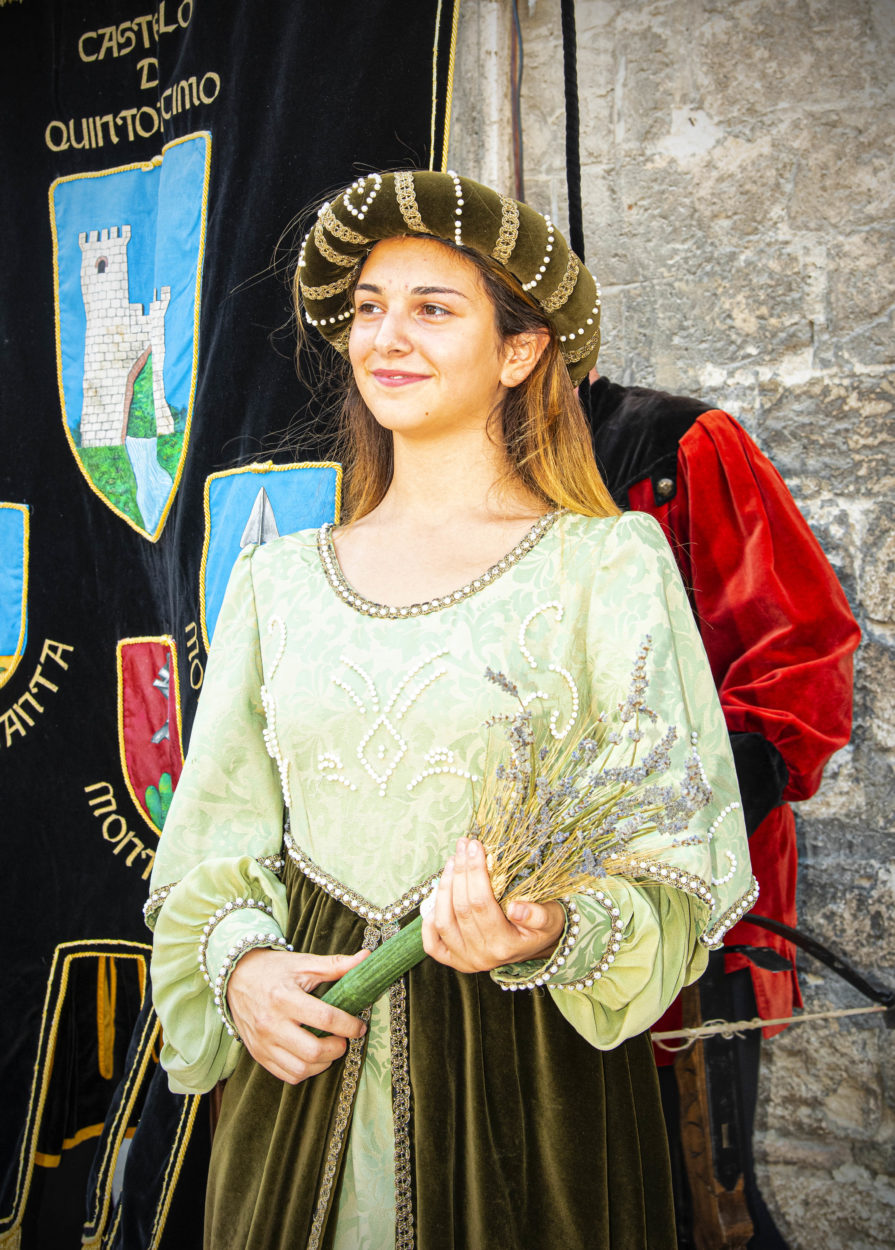
A young woman representing Castel di Castorano.
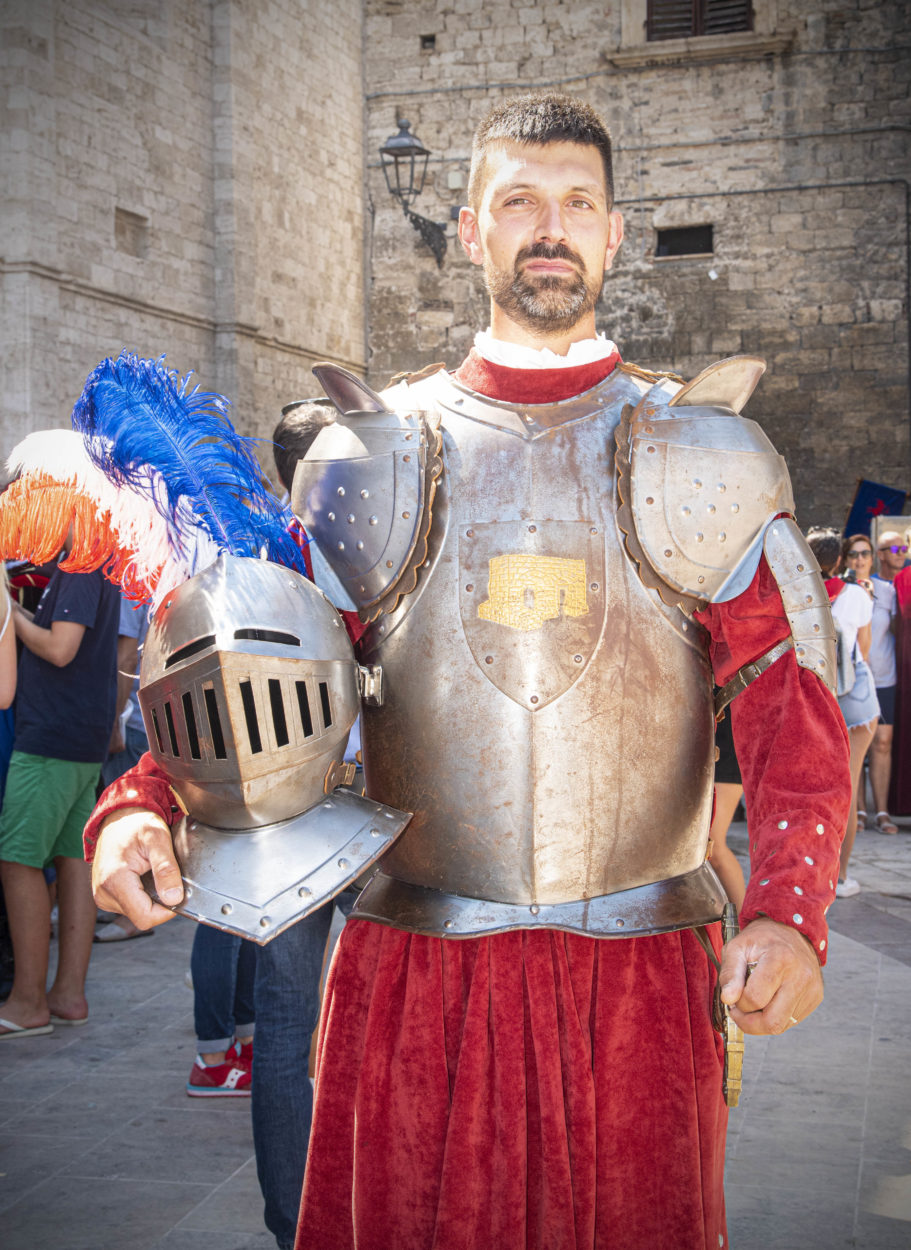
A noble knight of Sestieri Porta Romana in formal pose.
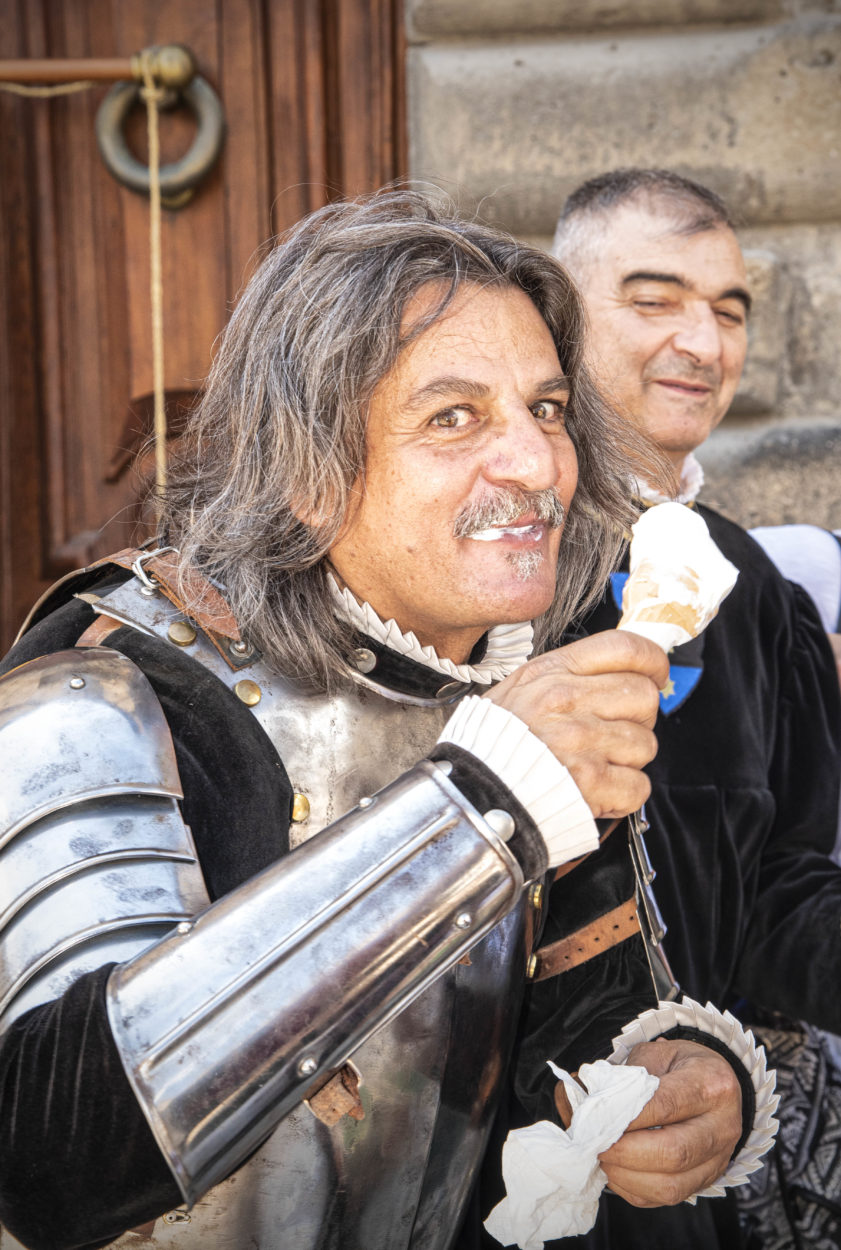
A Renaissance knight in a more informal pose enjoying a 21st century treat in the Italian August heat.

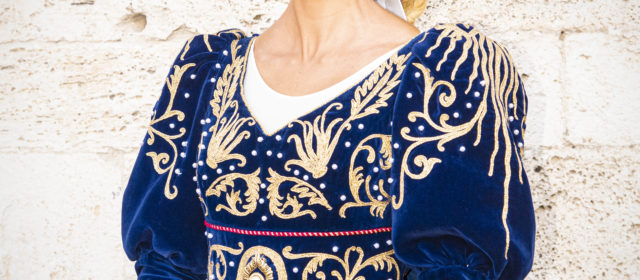
5 Comments
Wonderful photos Larry!
An amazing recount and fabulous pics, you should be both given honorary citizenship. Always enjoy reading your stories and your views of Ascoli.
Larry, you have captured perfectly my favorite time of year in Ascoli with your stunning photos and eloquent description! I can still hear the Quintana theme music echoing throughout the streets of Ascoli! And it does indeed stir my imagination and transport me back in time to the excitement of this centuries old tradition! Grazie tantissimi, caro amico!
Wonderful to learn about the Quintana and the pictures are amazing. Thanks!
Thank you Larry. The pictures are absolutely fabulous. The best of the Quintana I have ever seen. As always, your description is comprehensive and enlightening. At last, I understand more clearly what I have always immensely enjoyed.